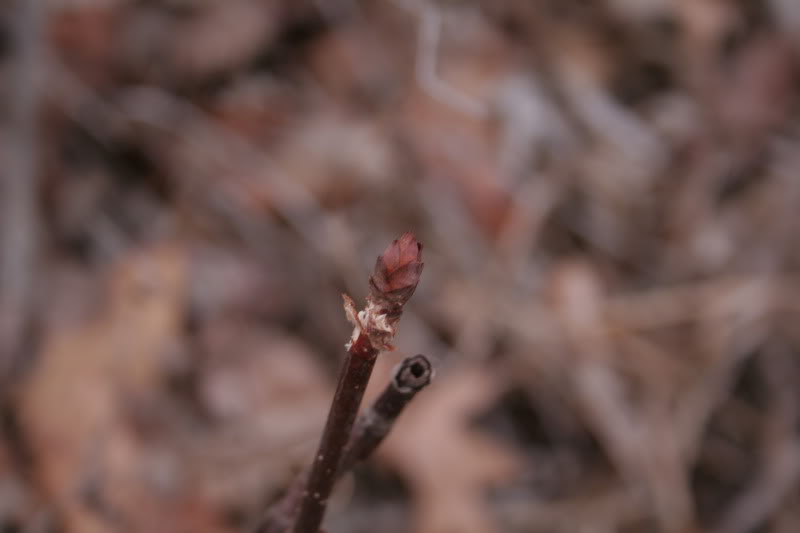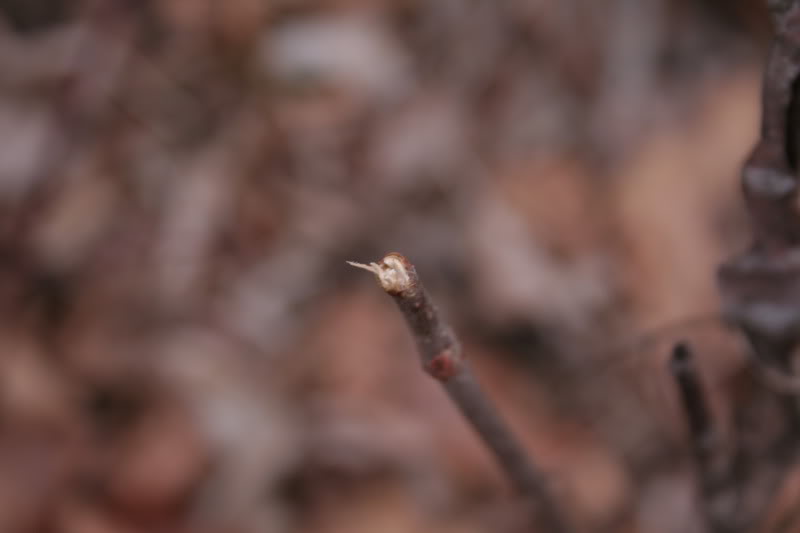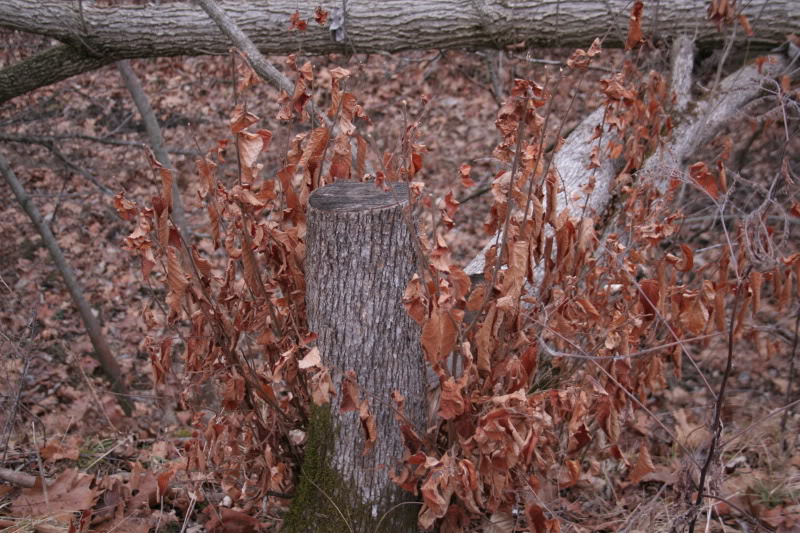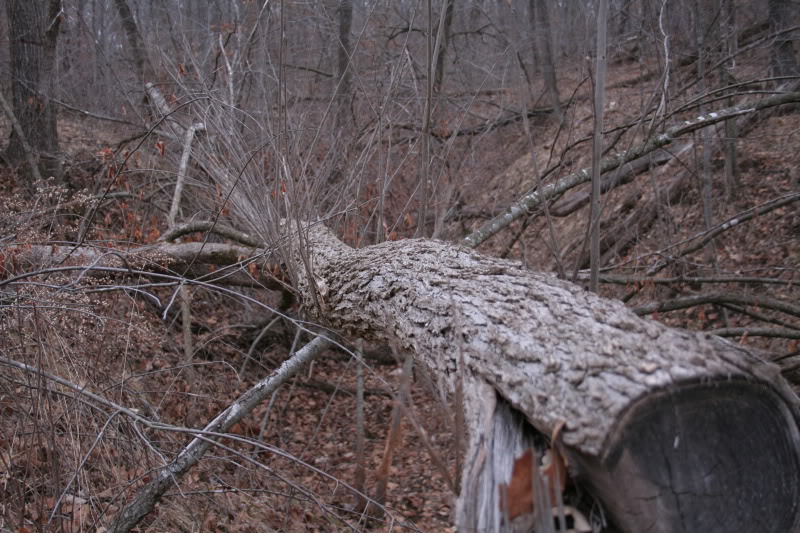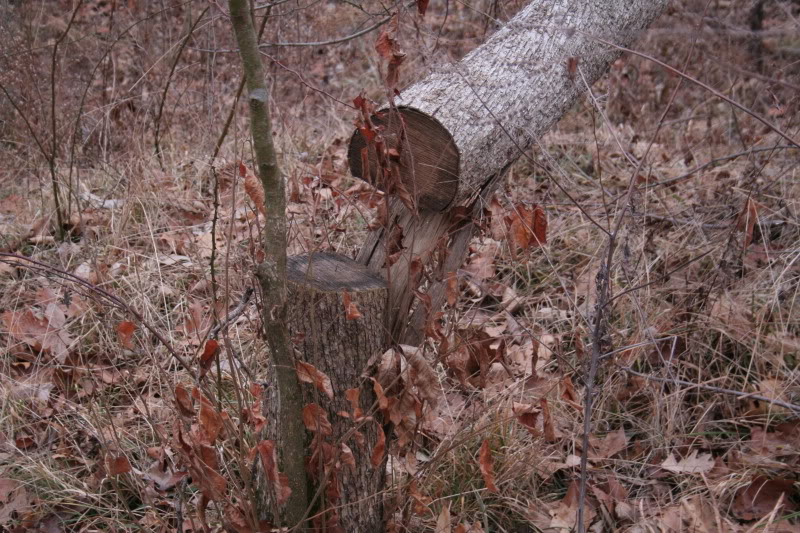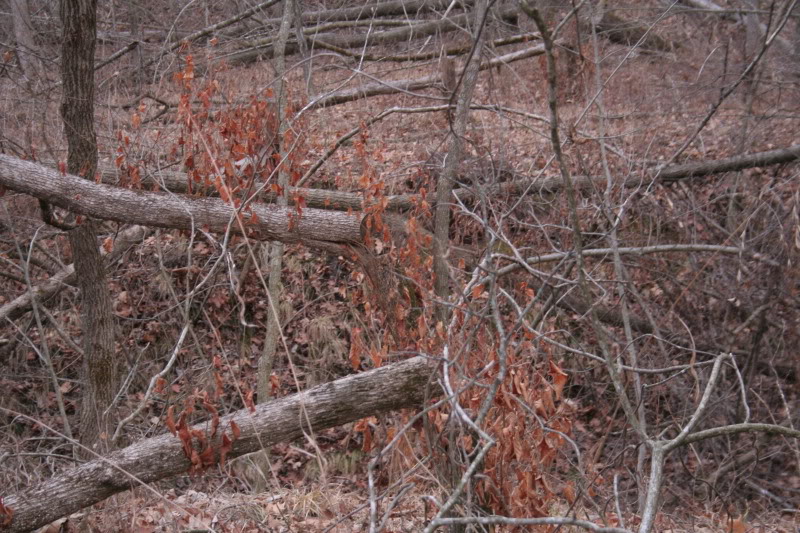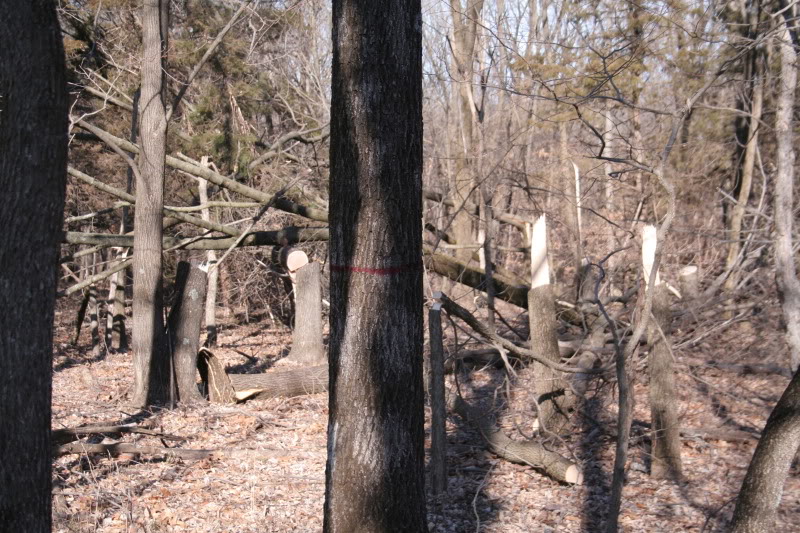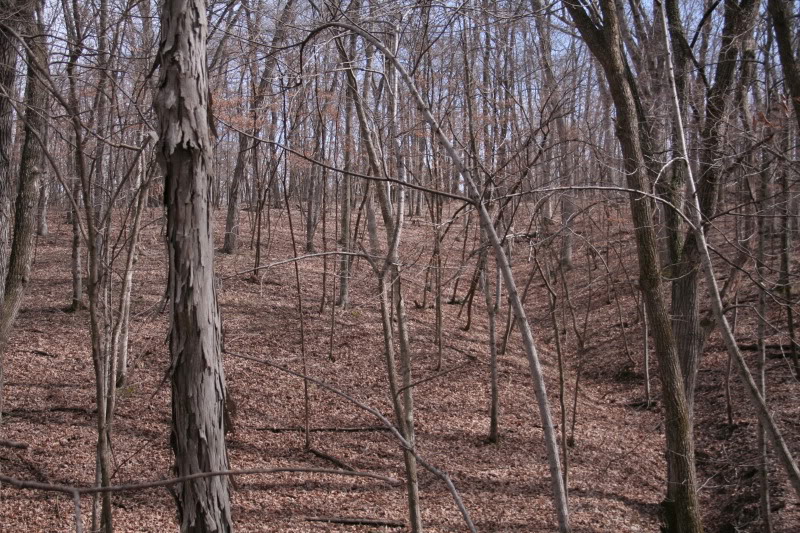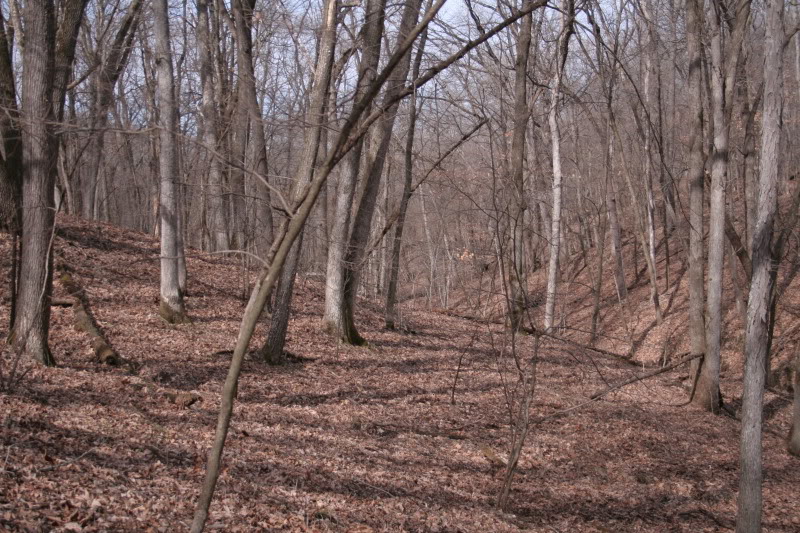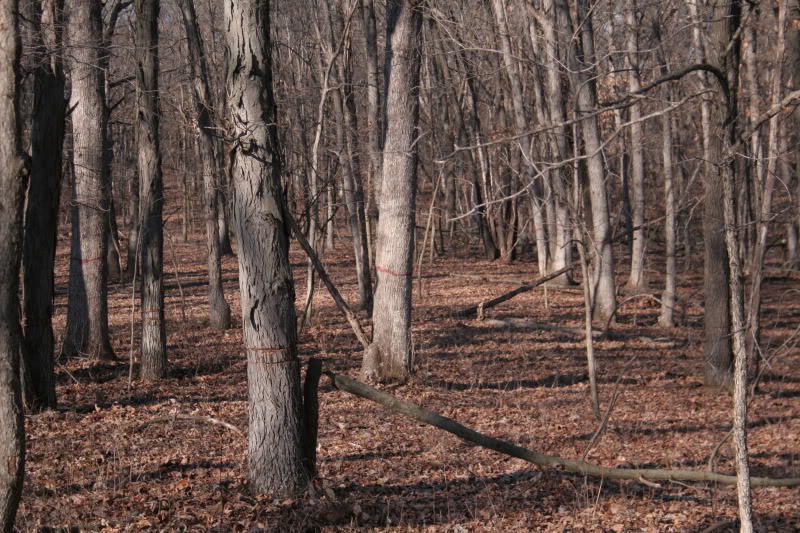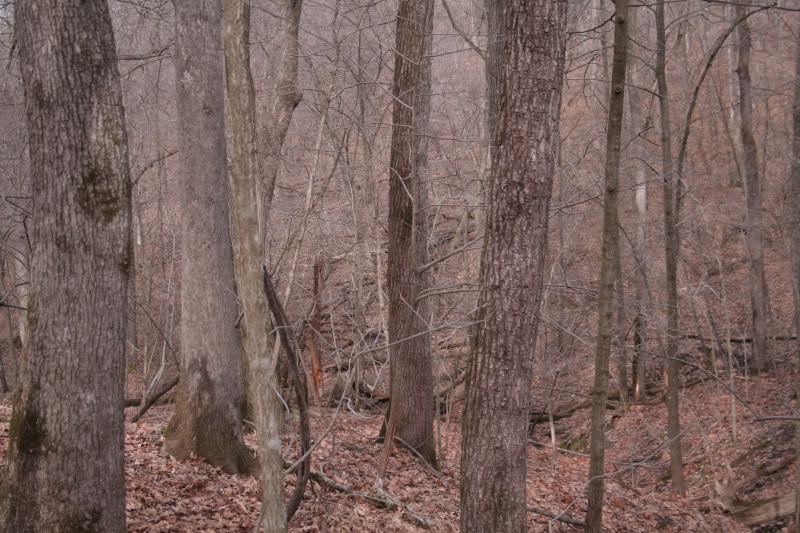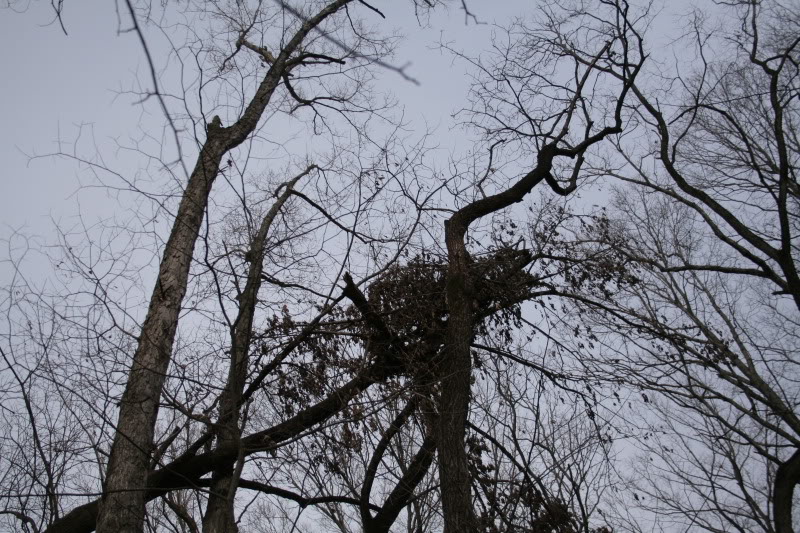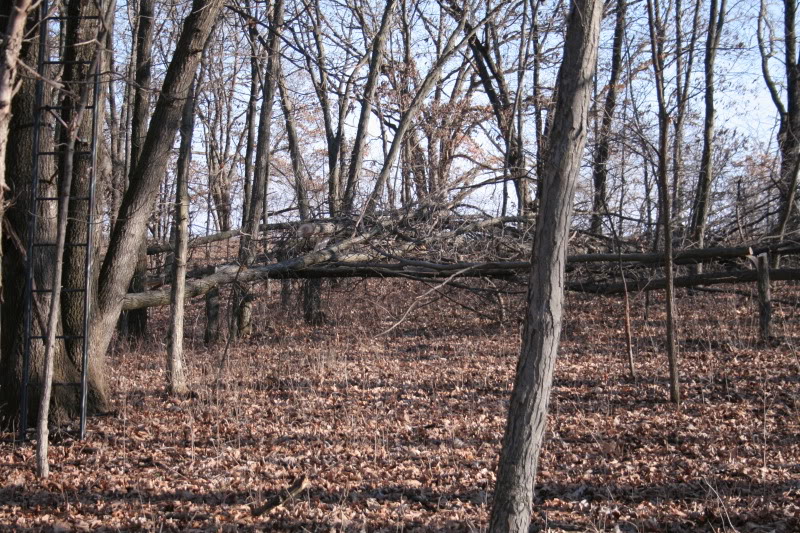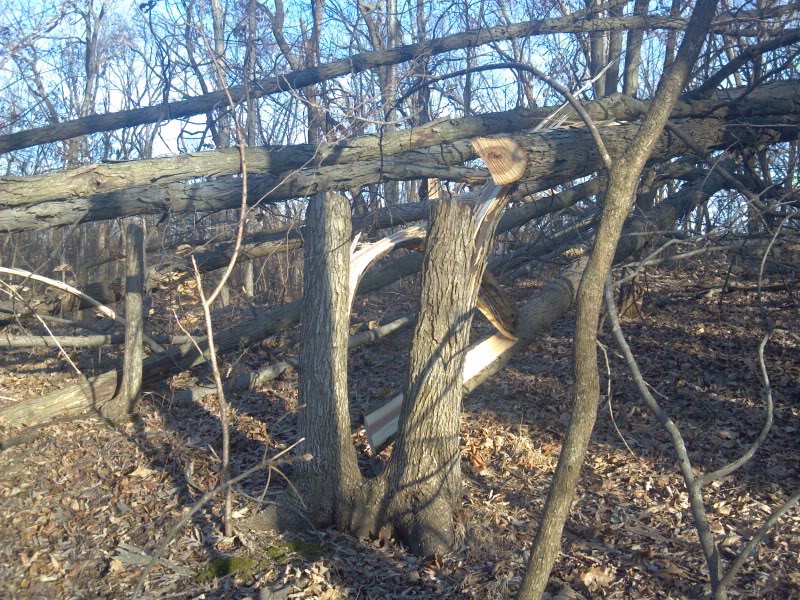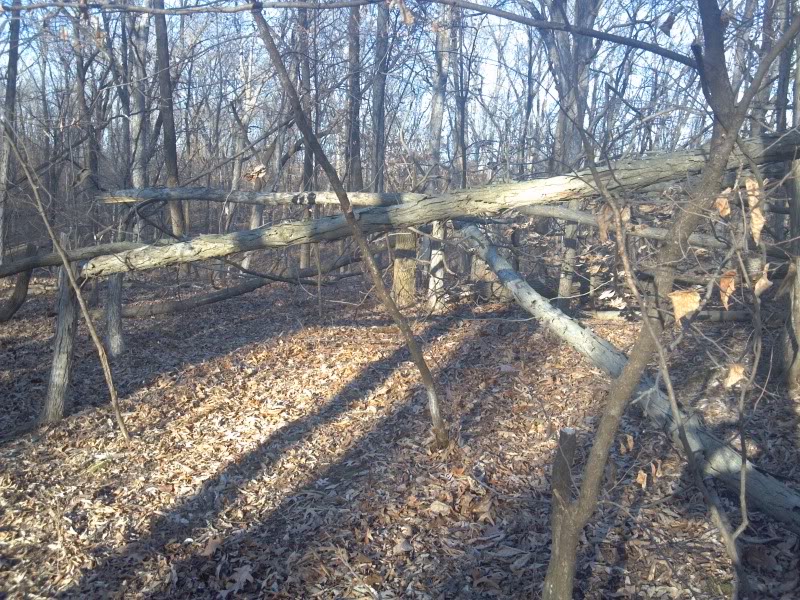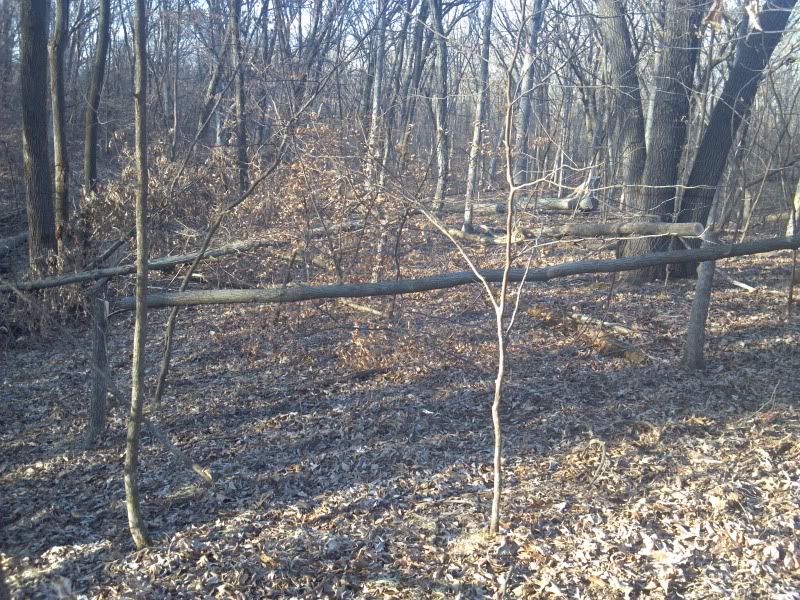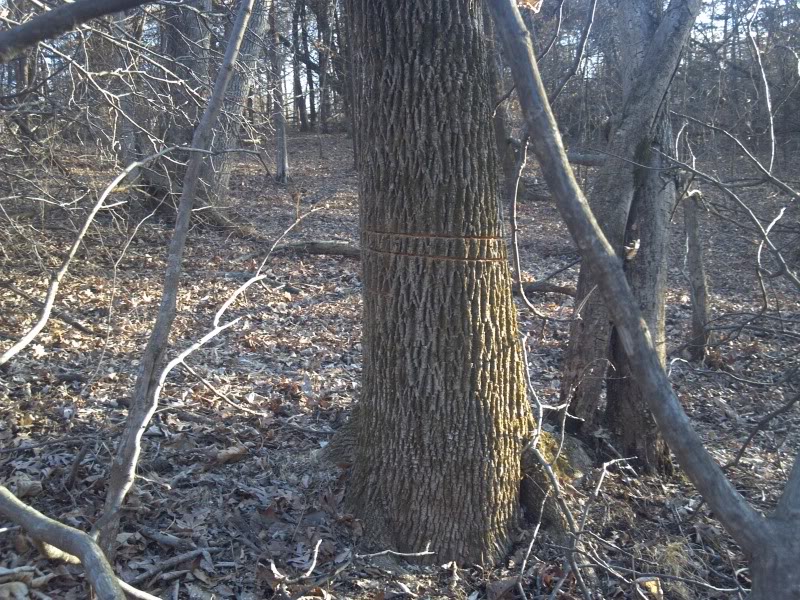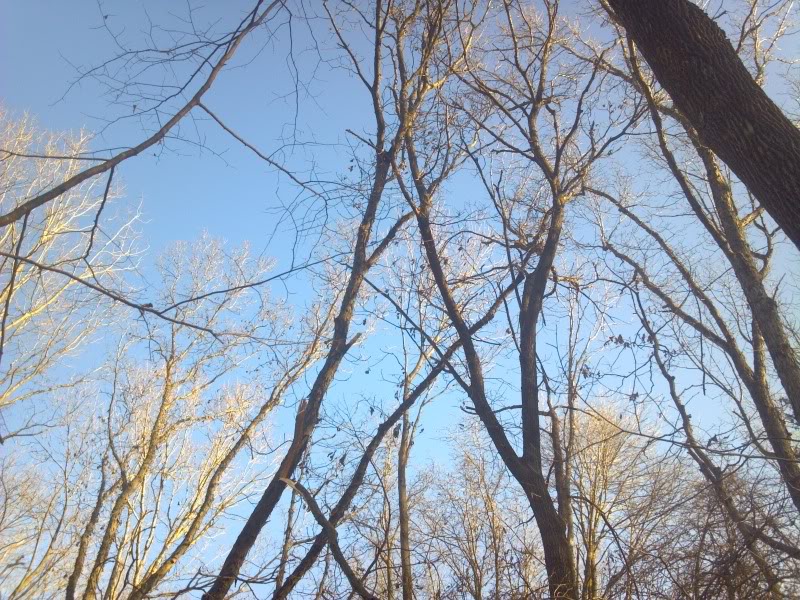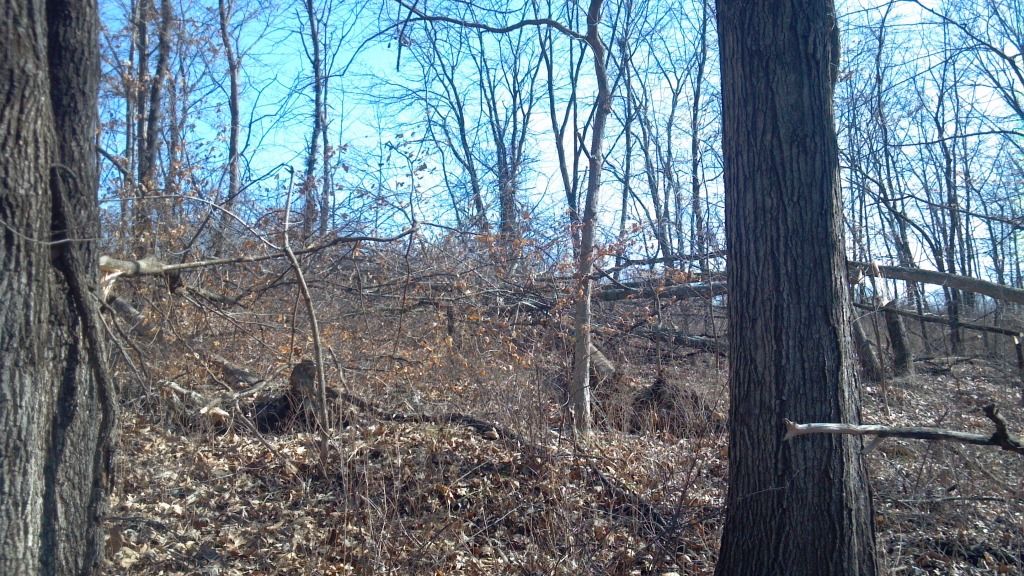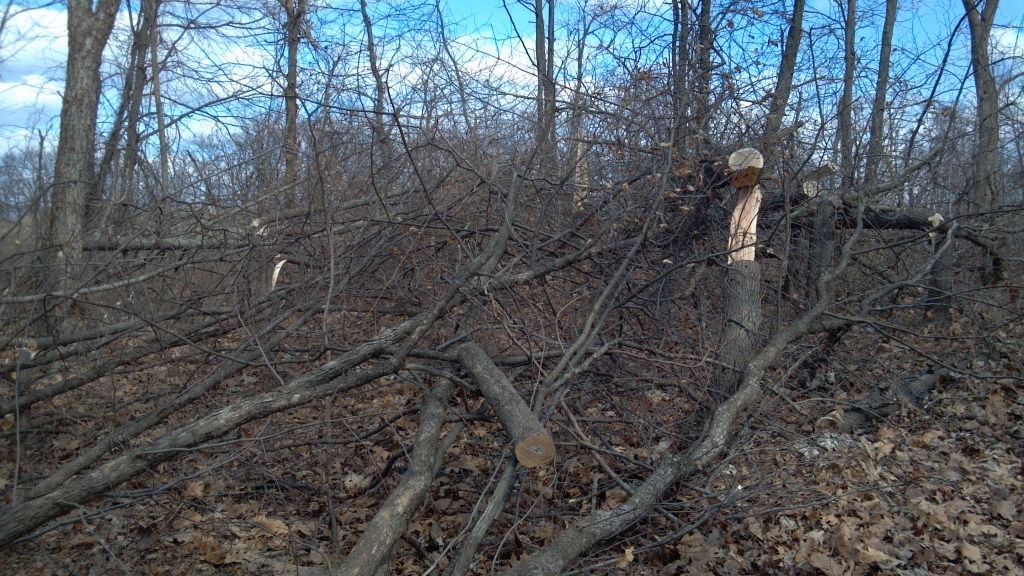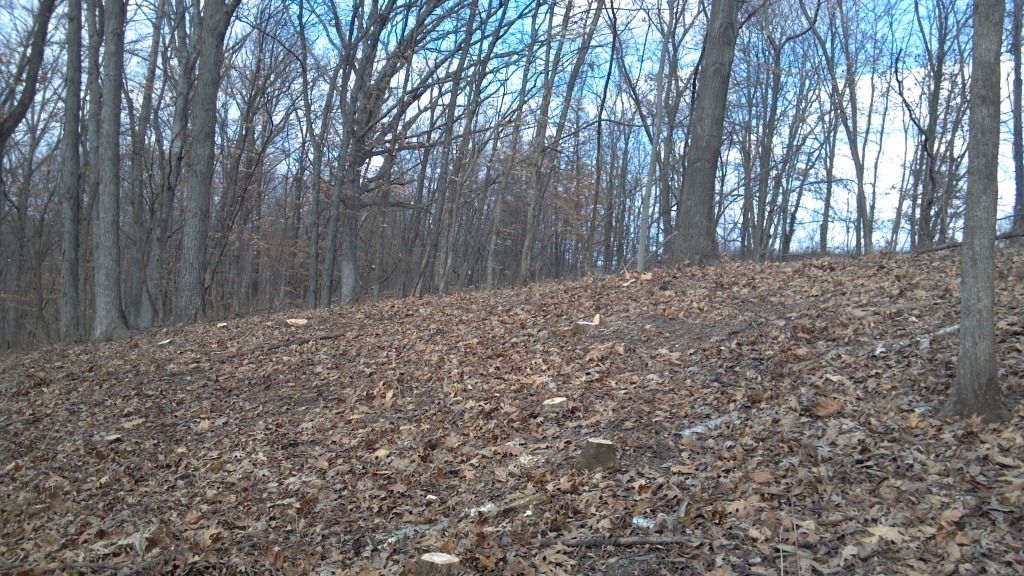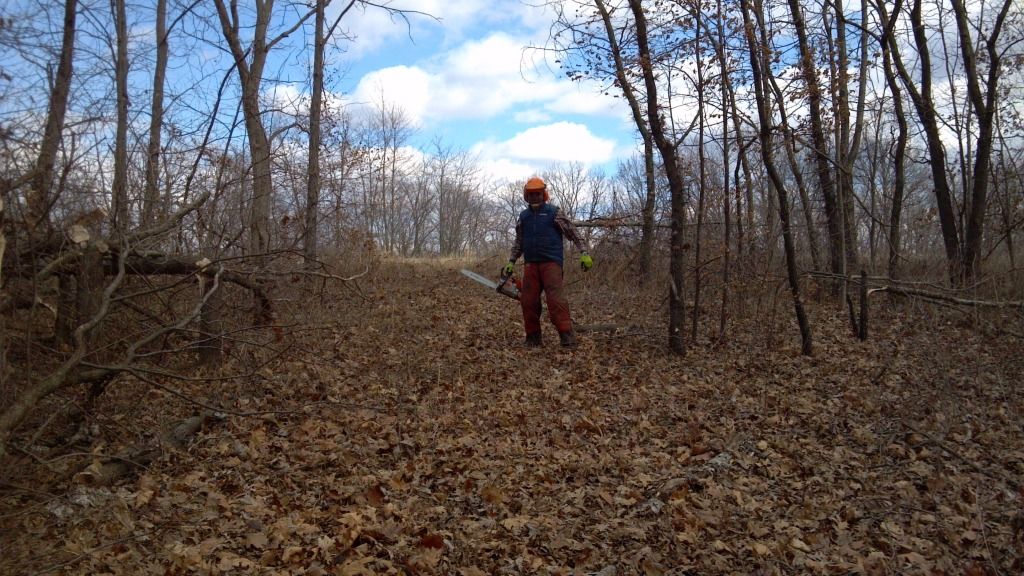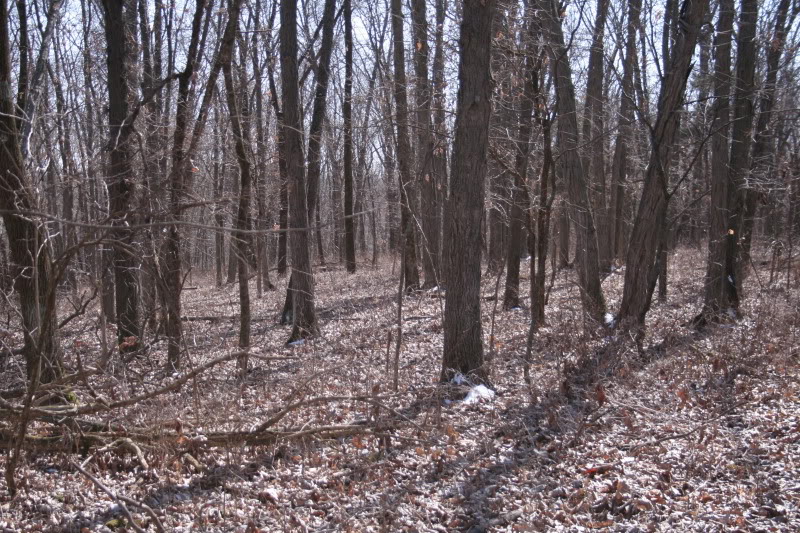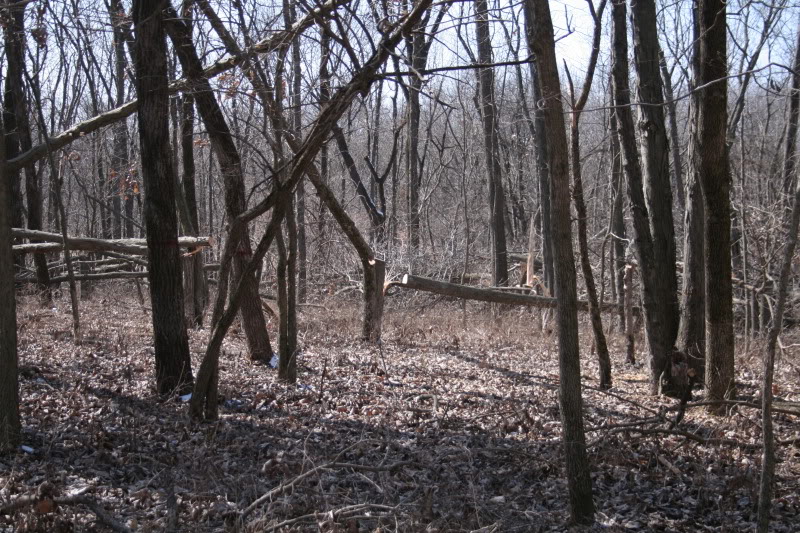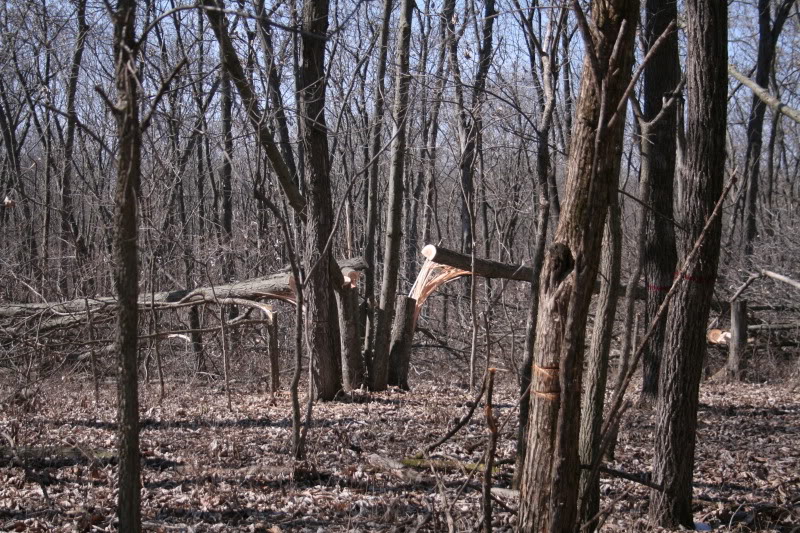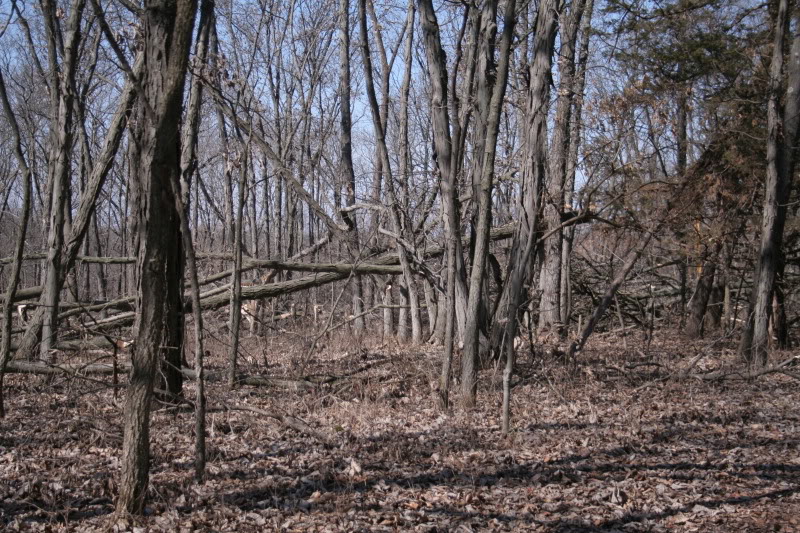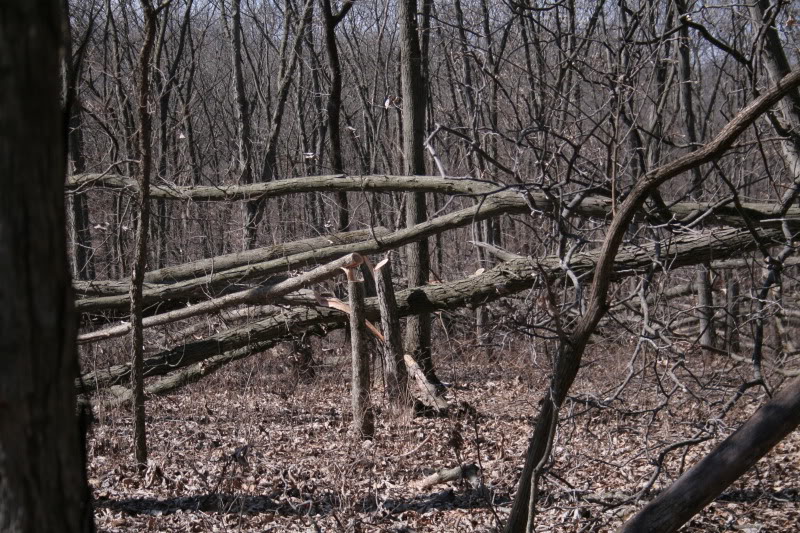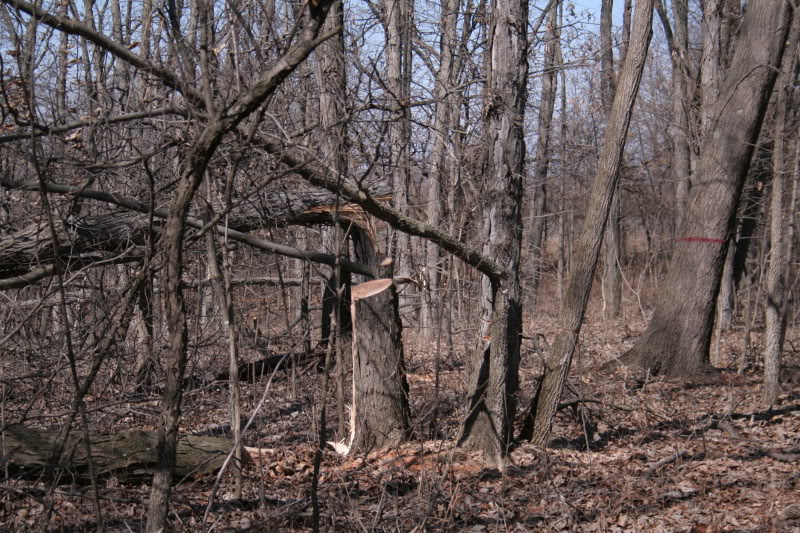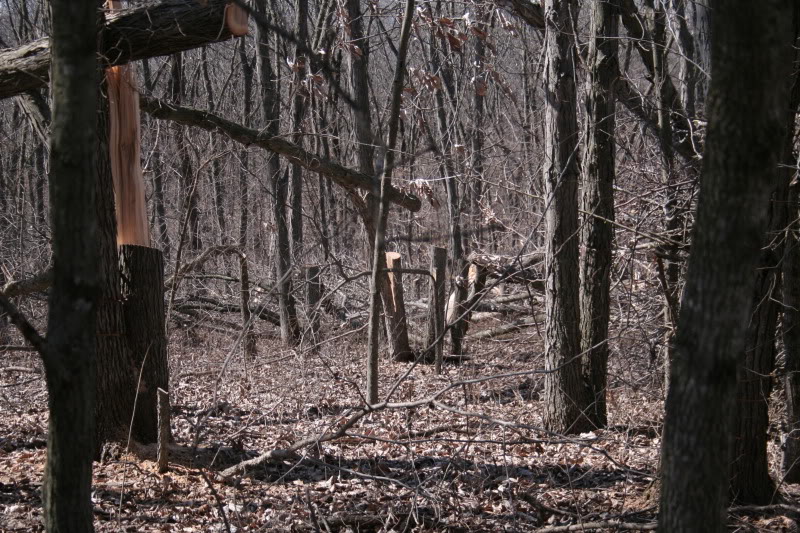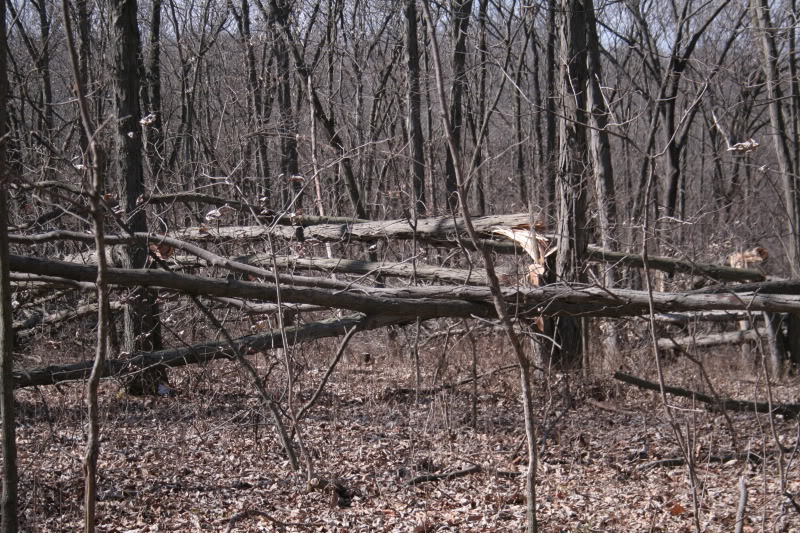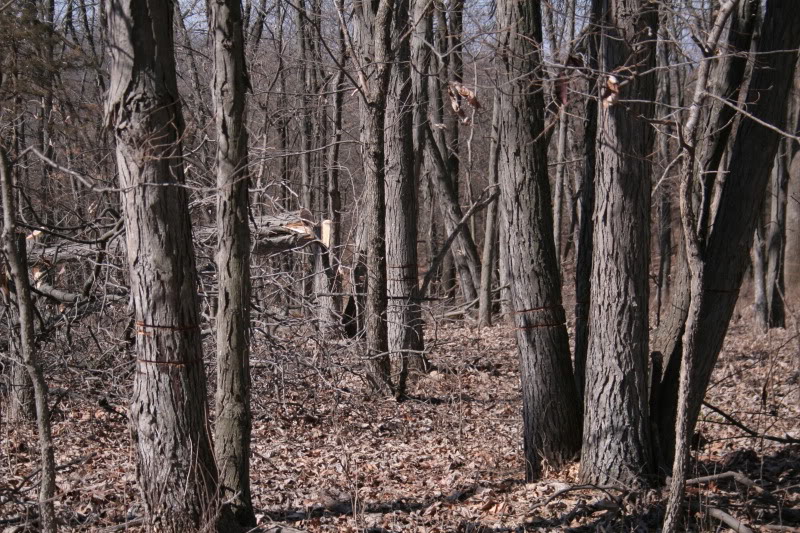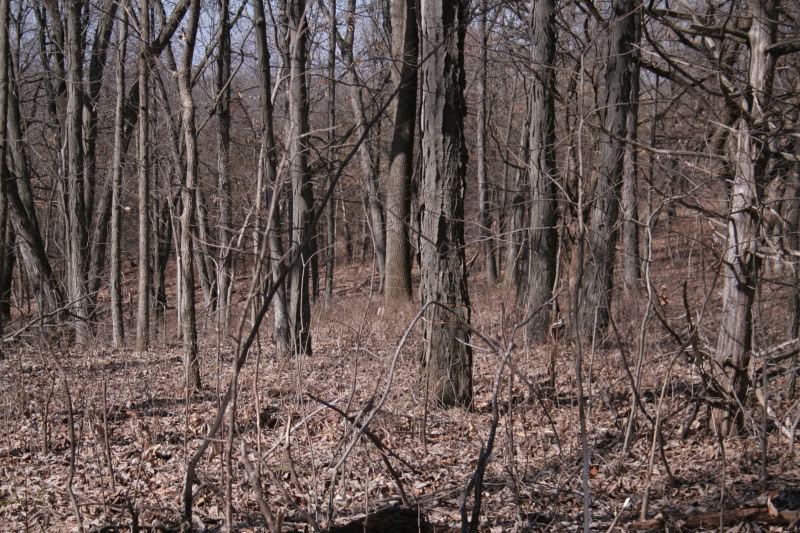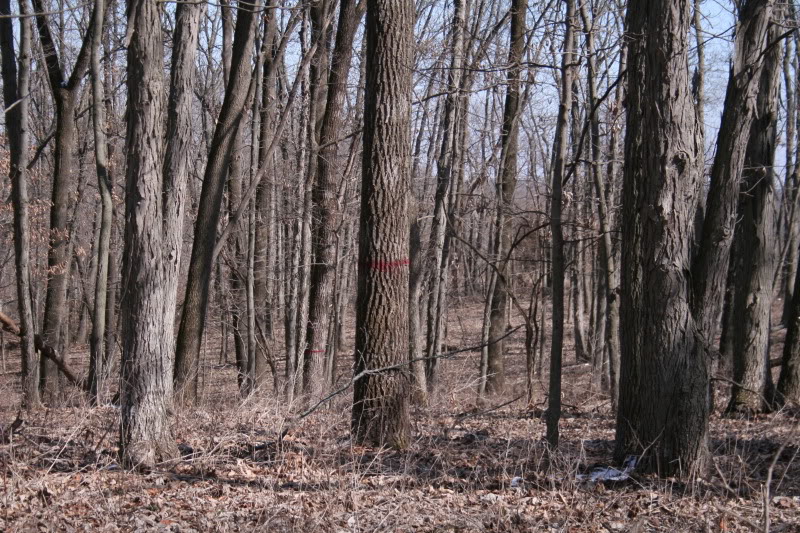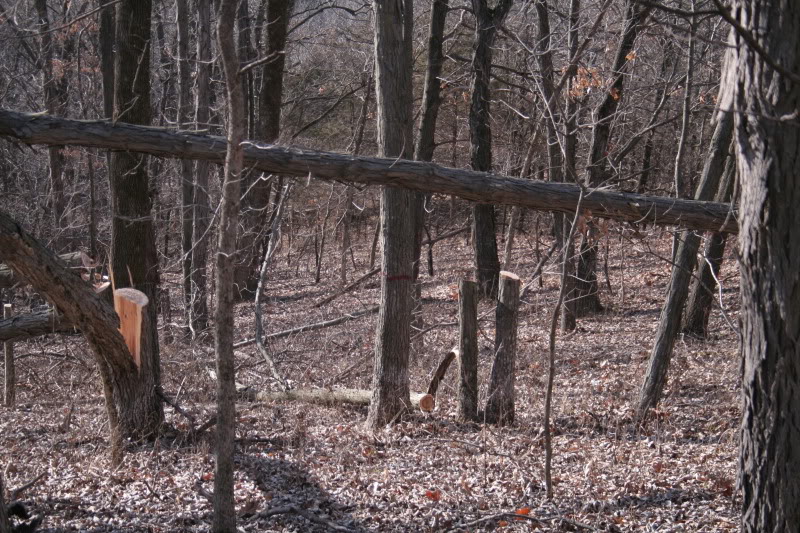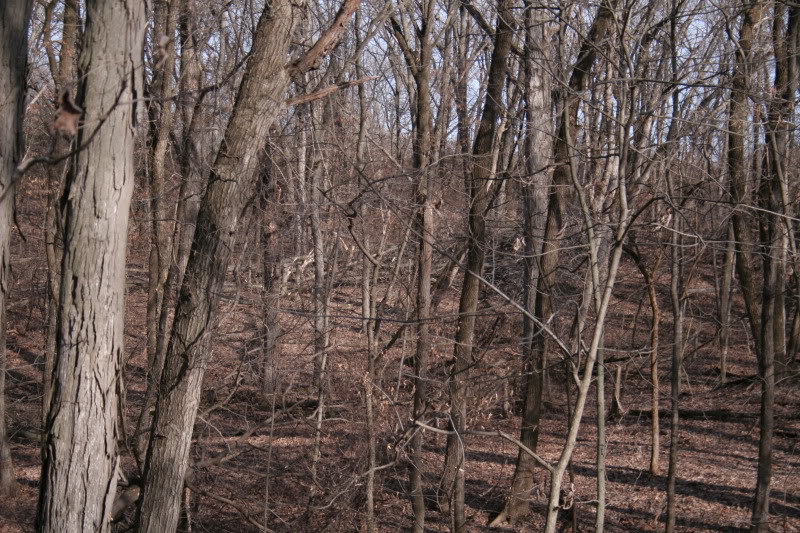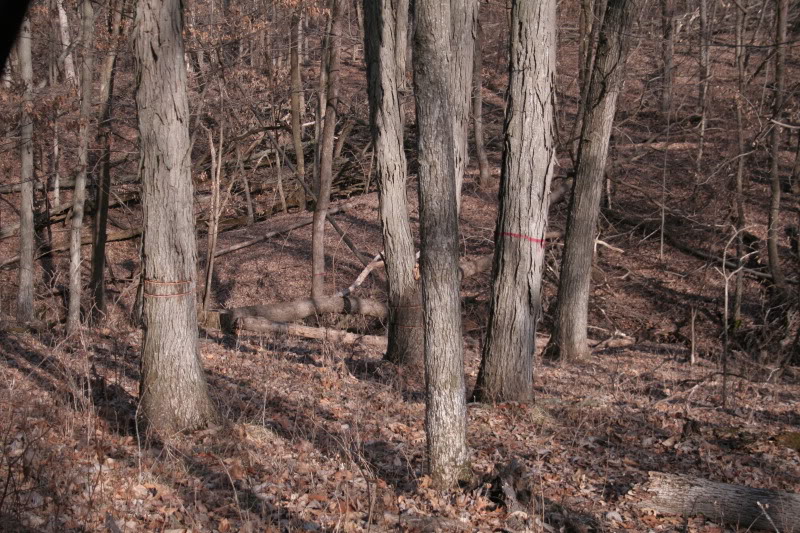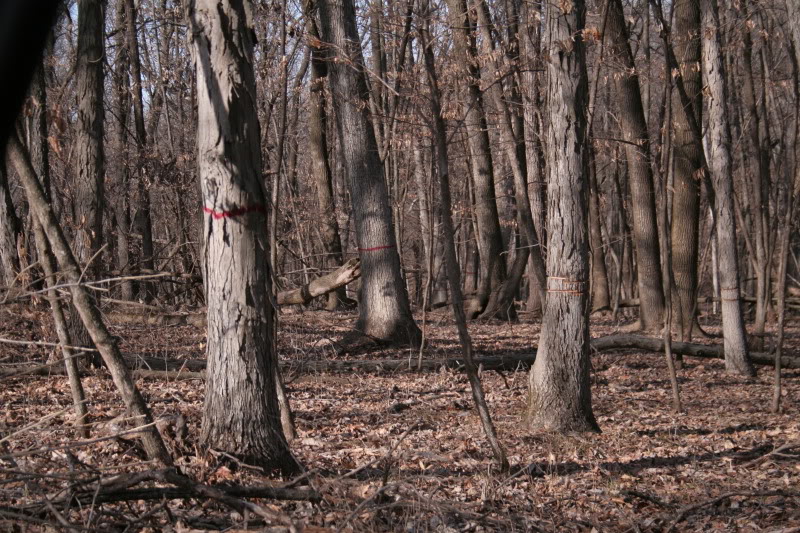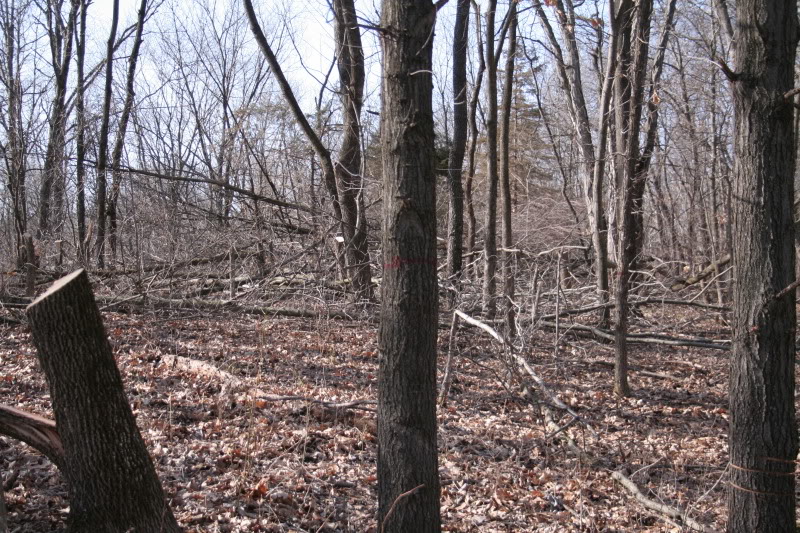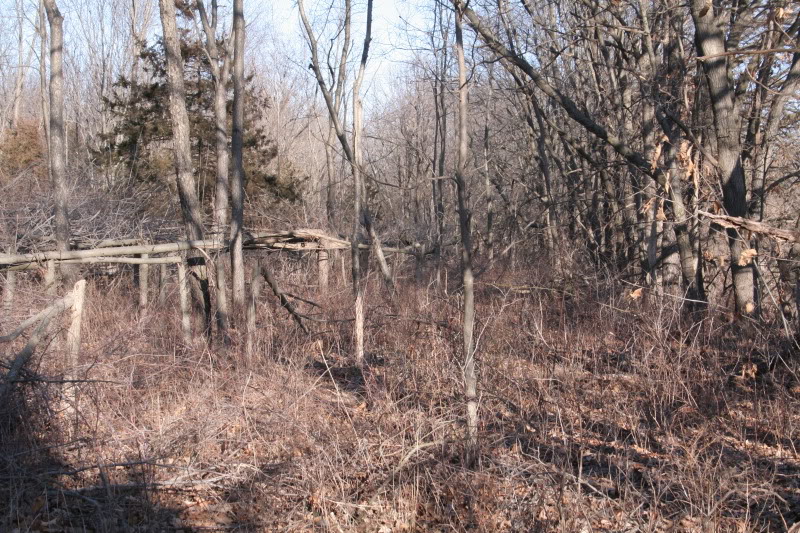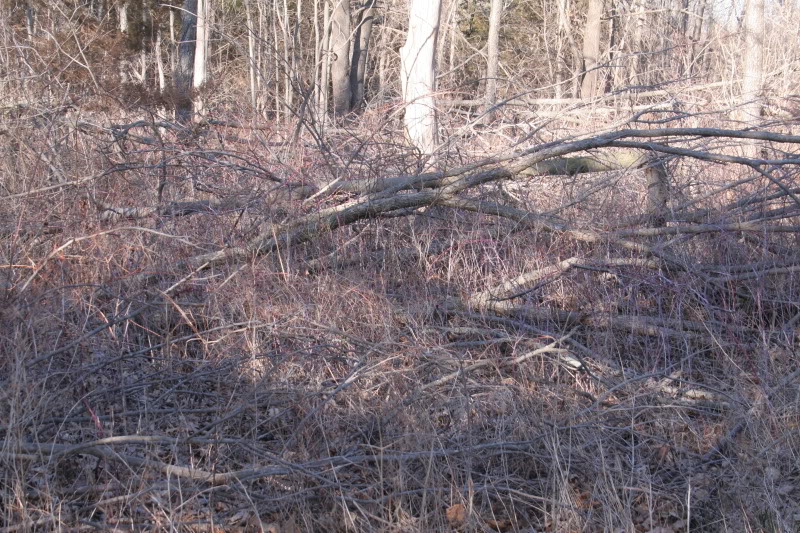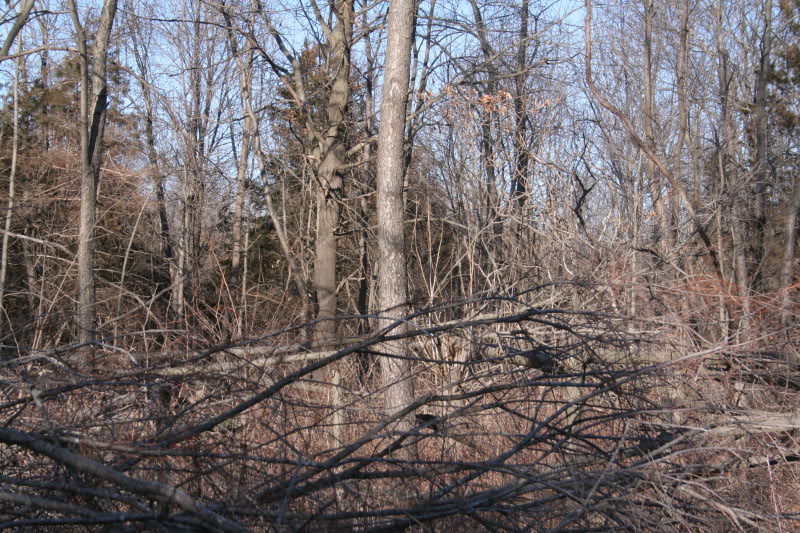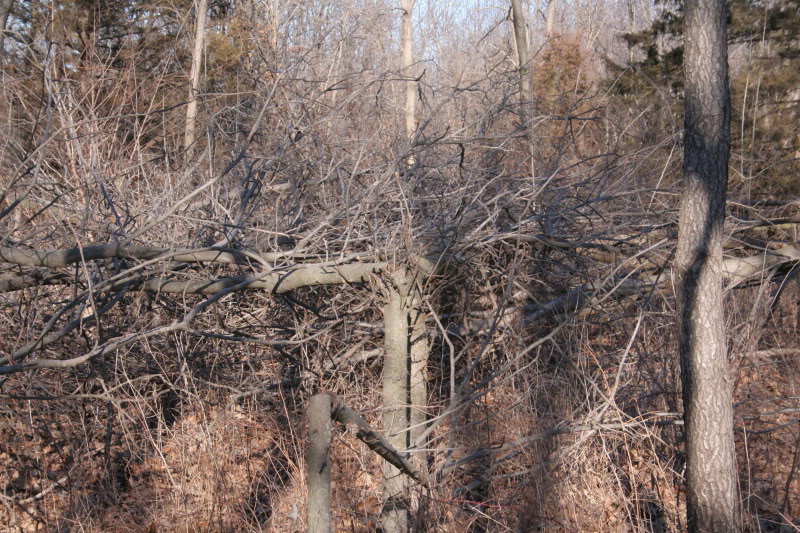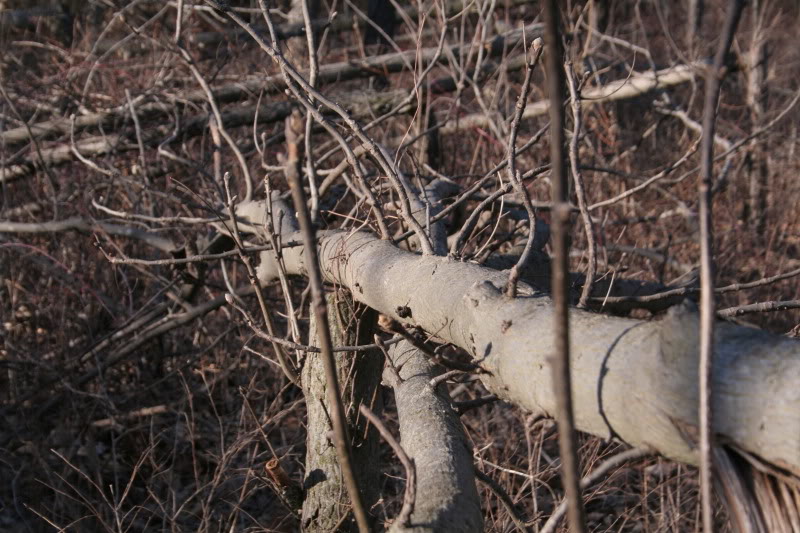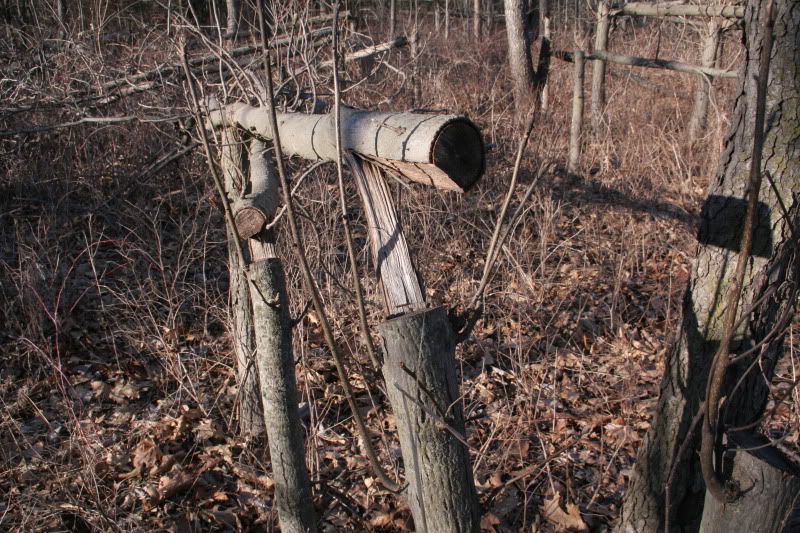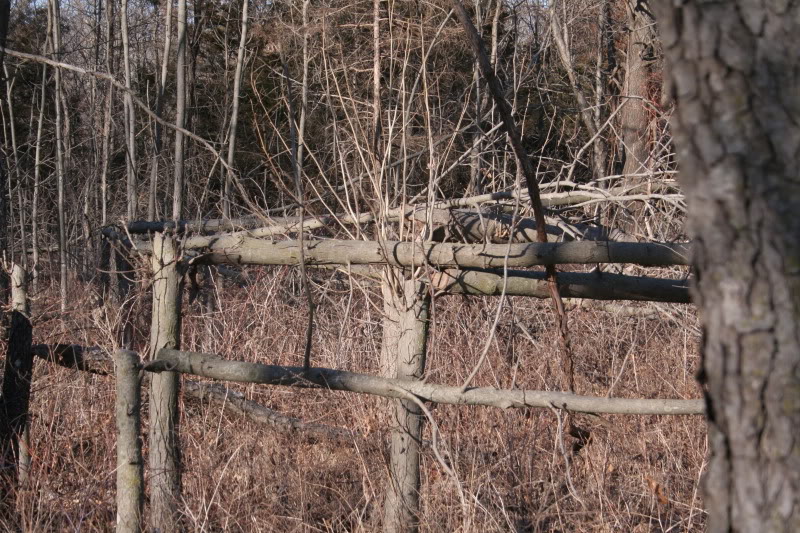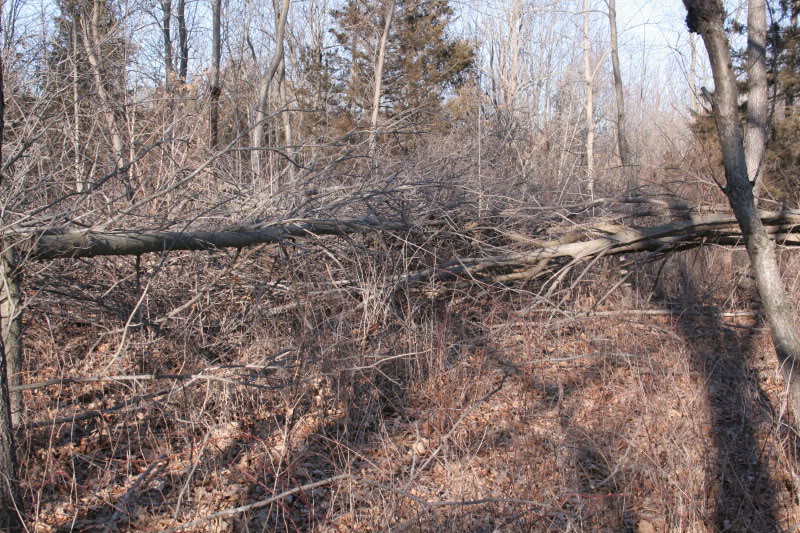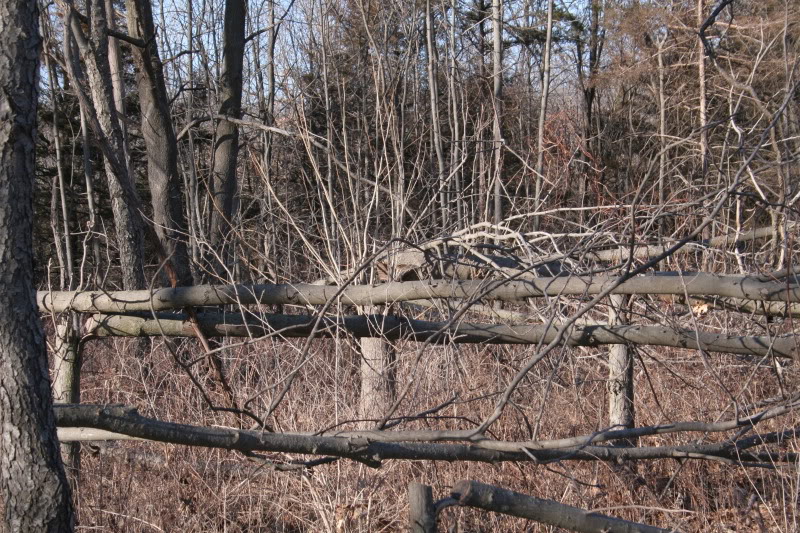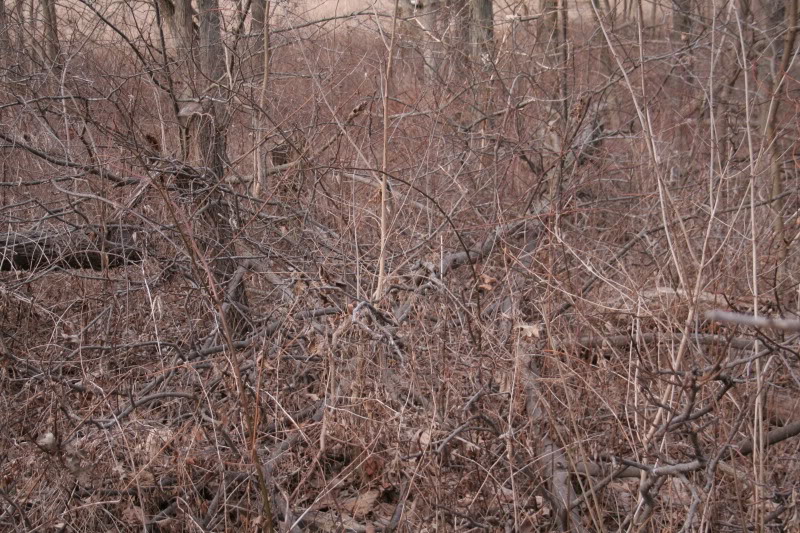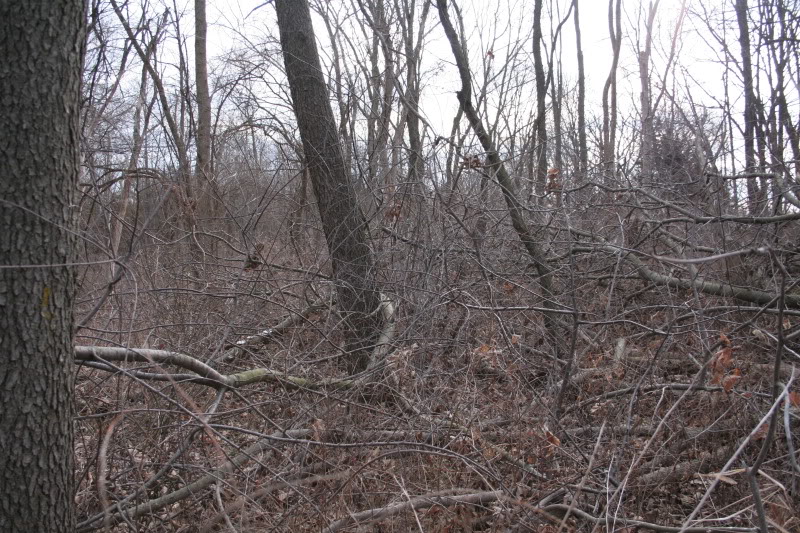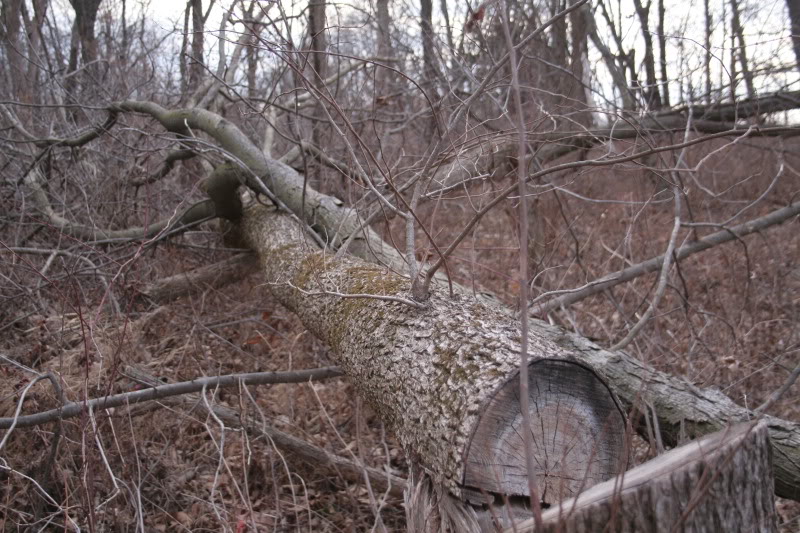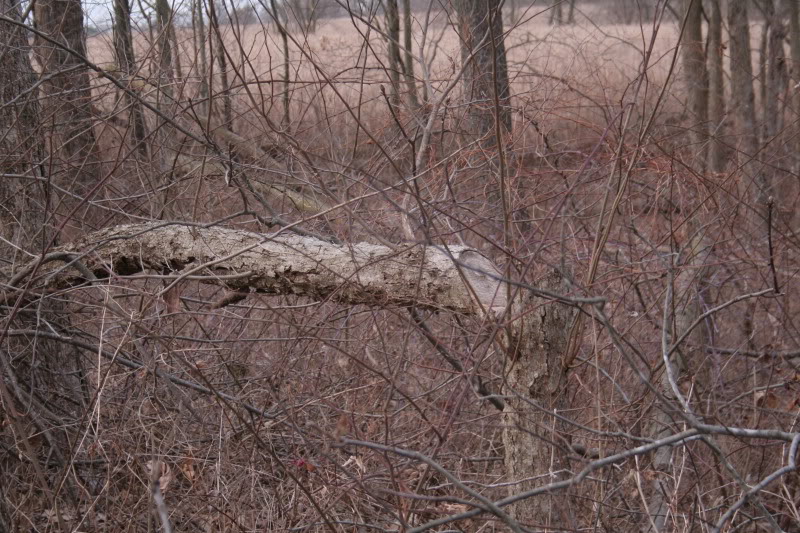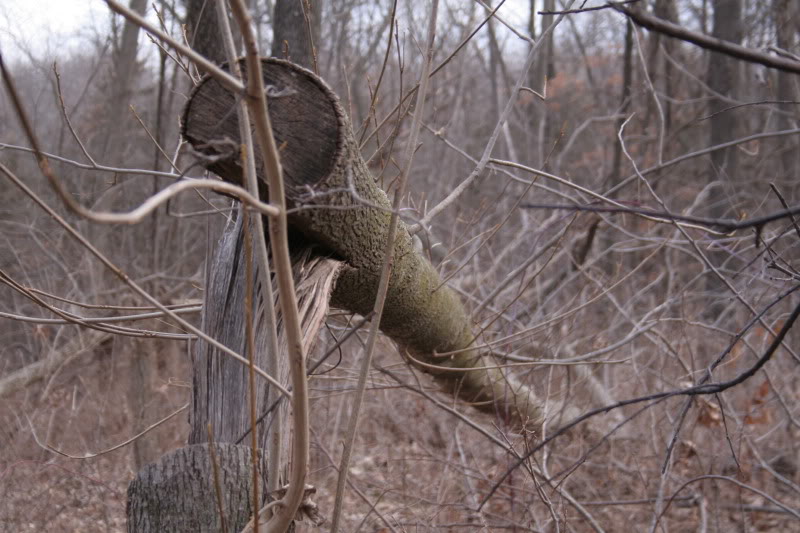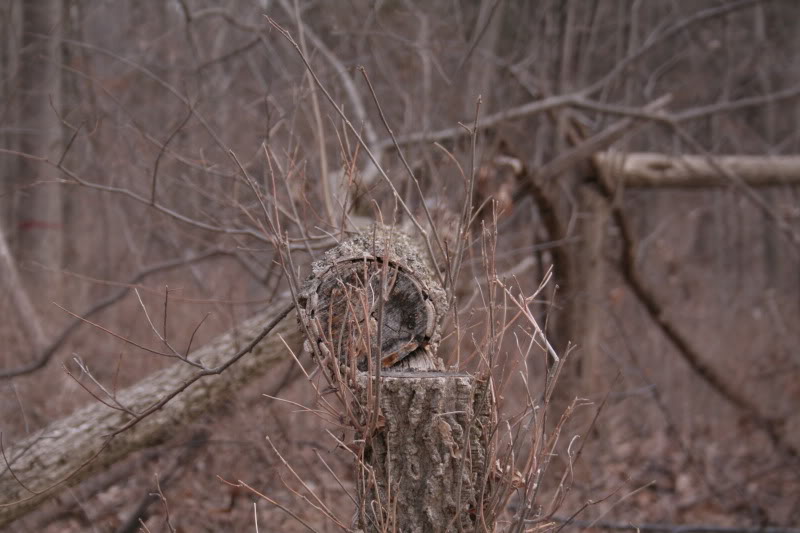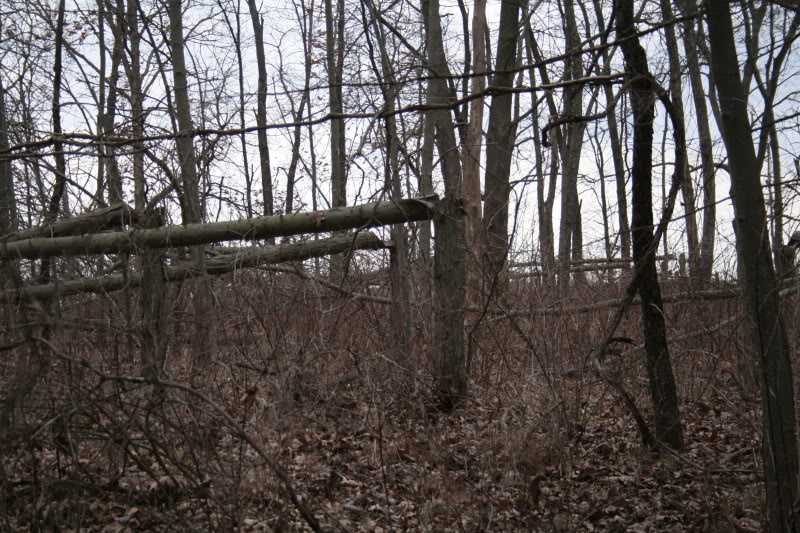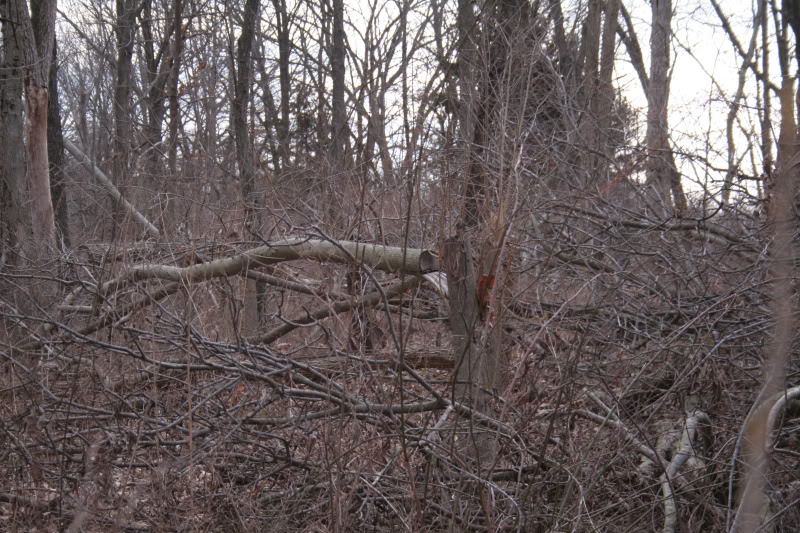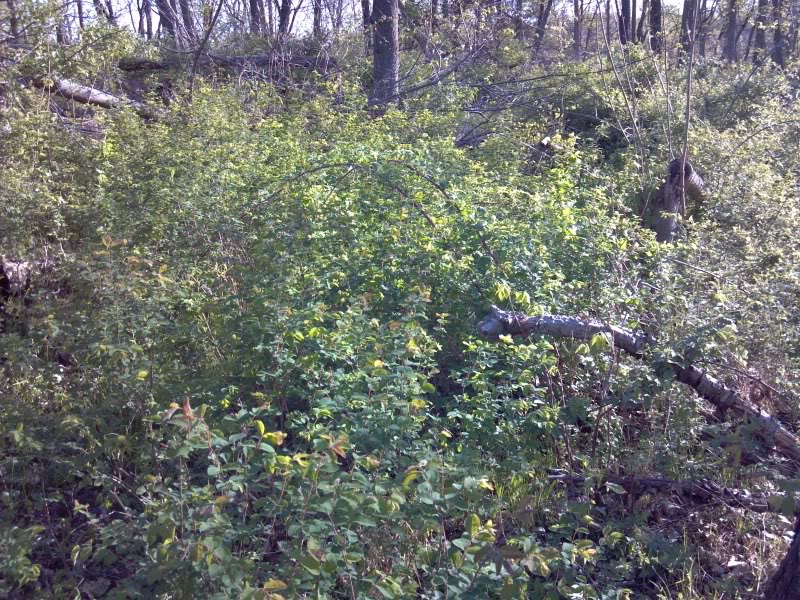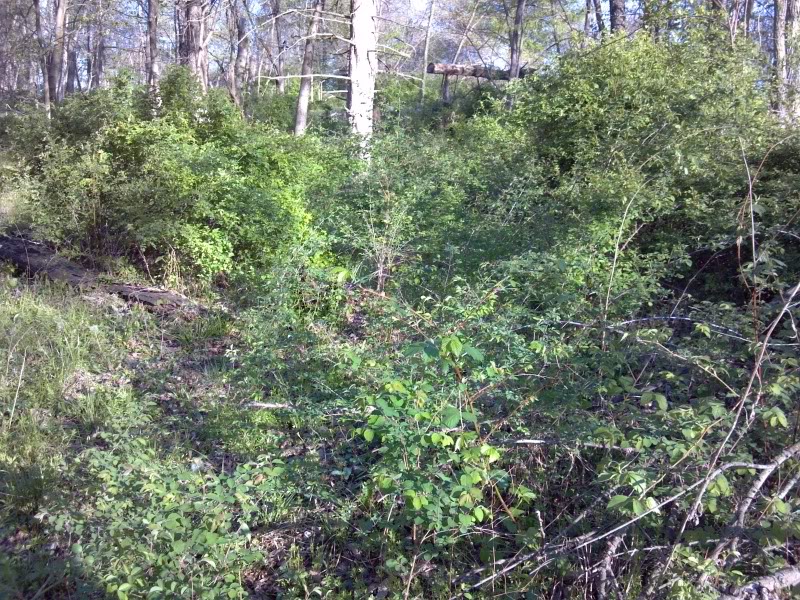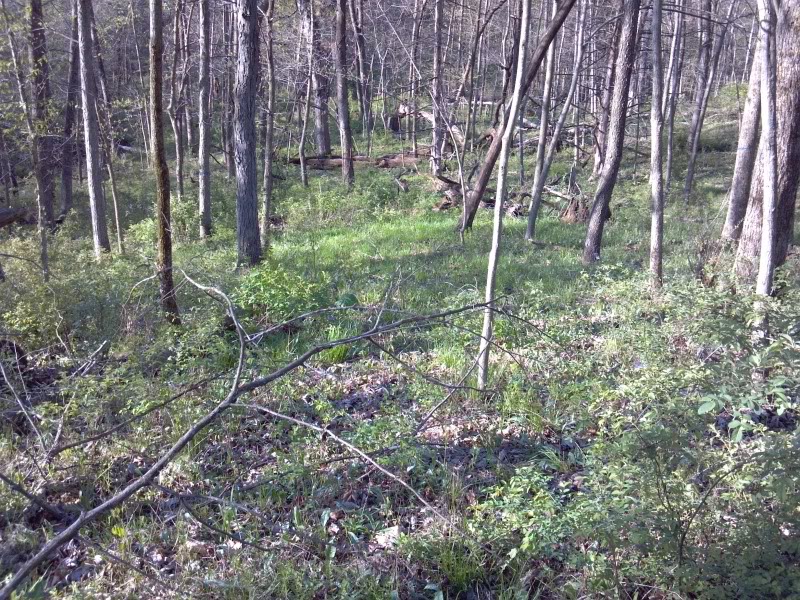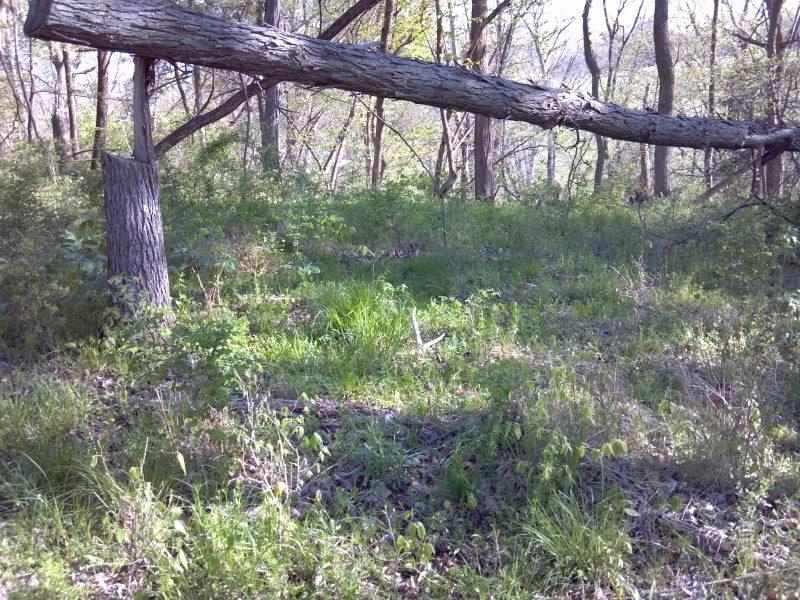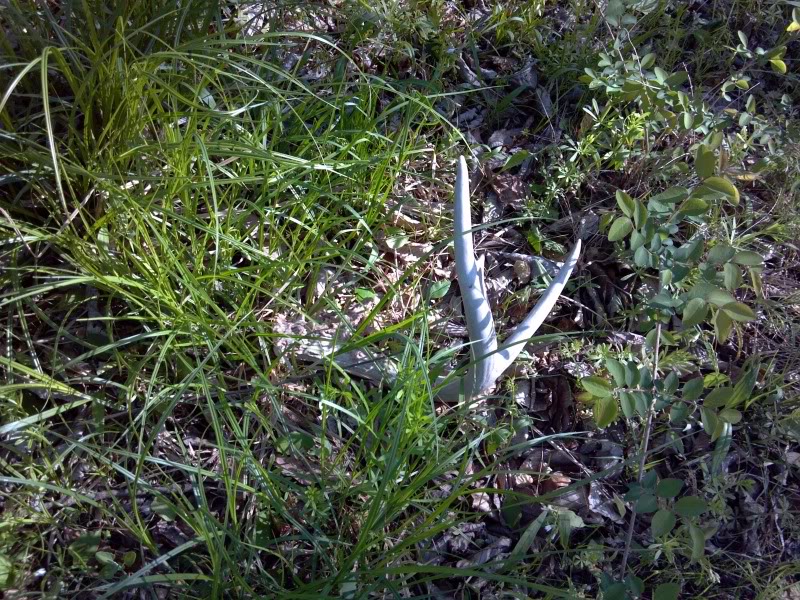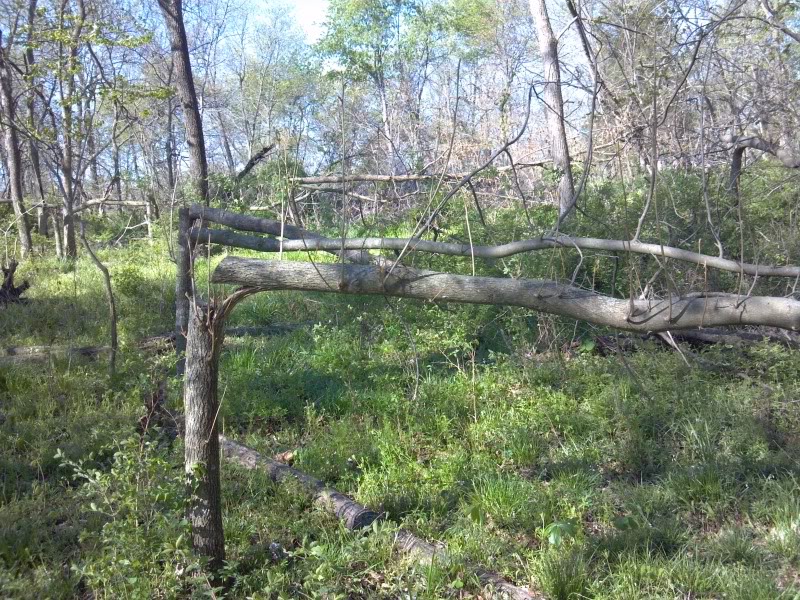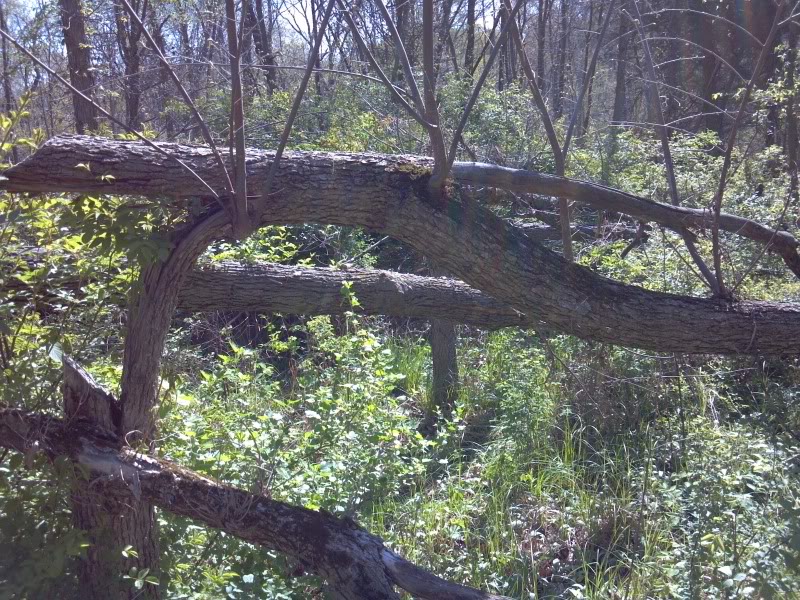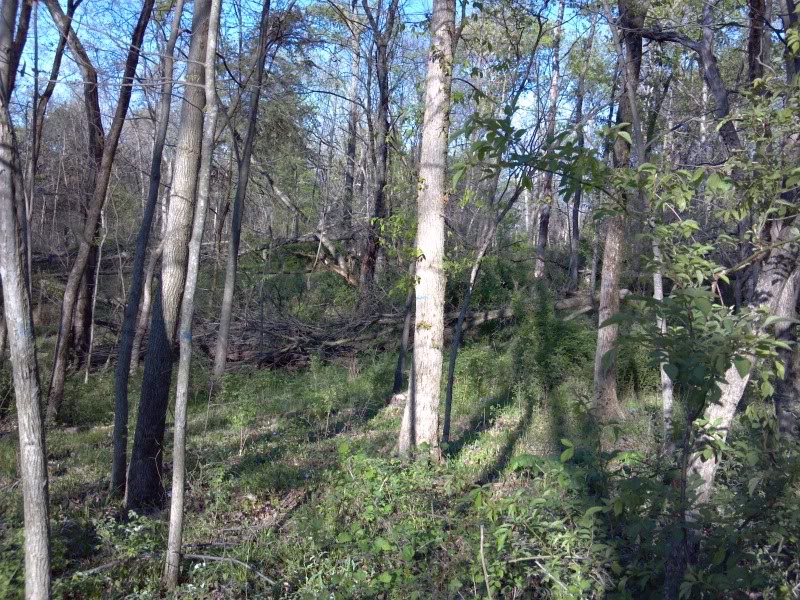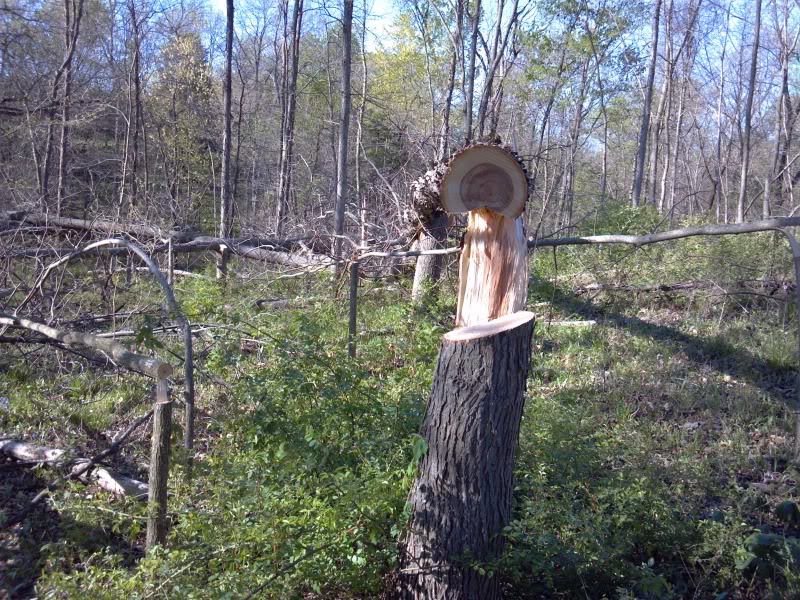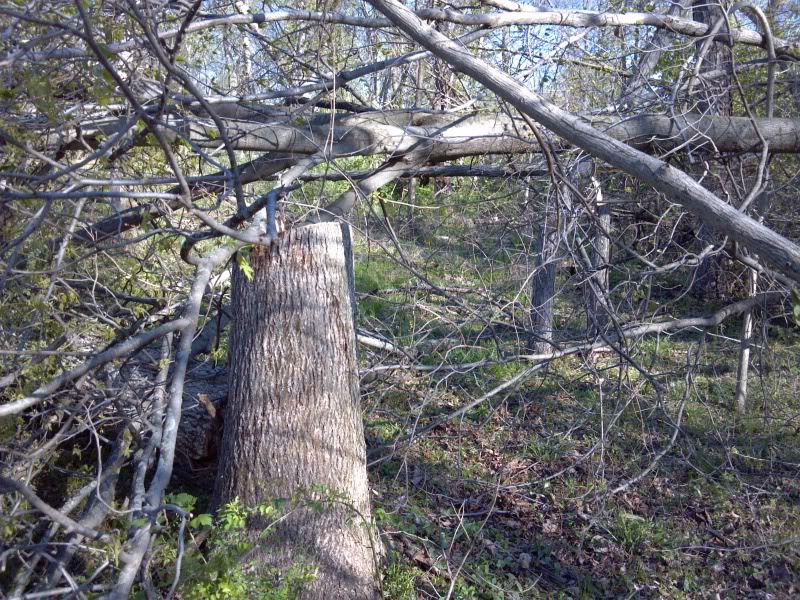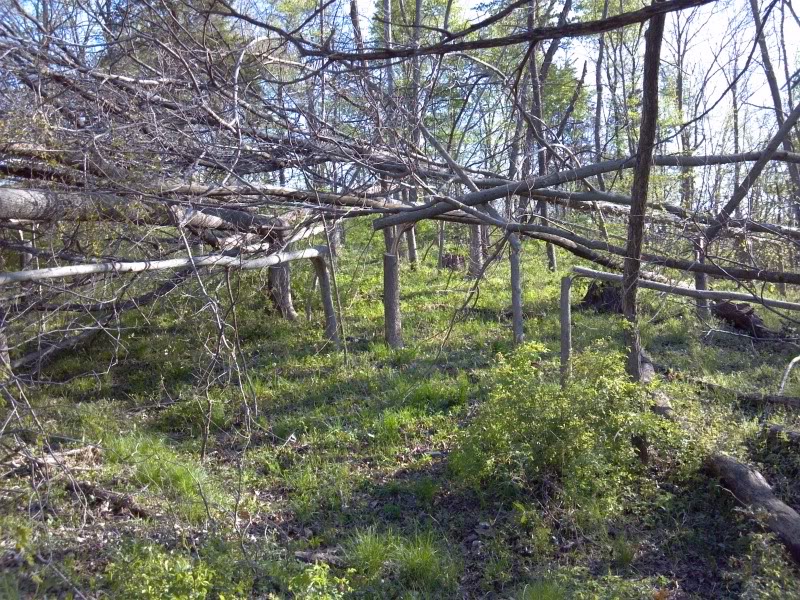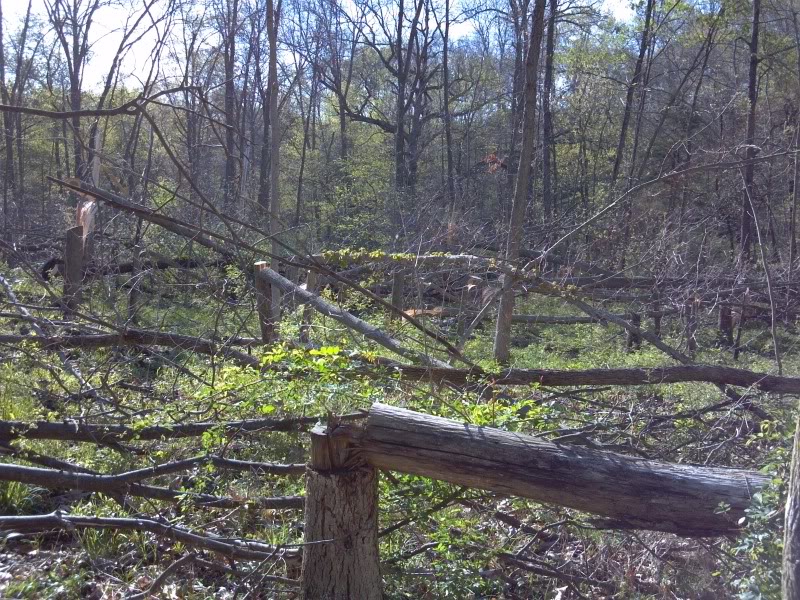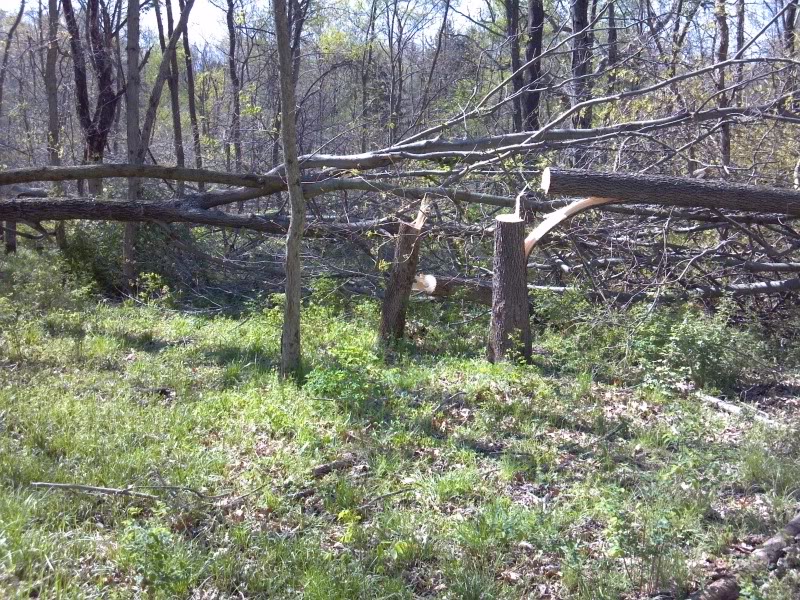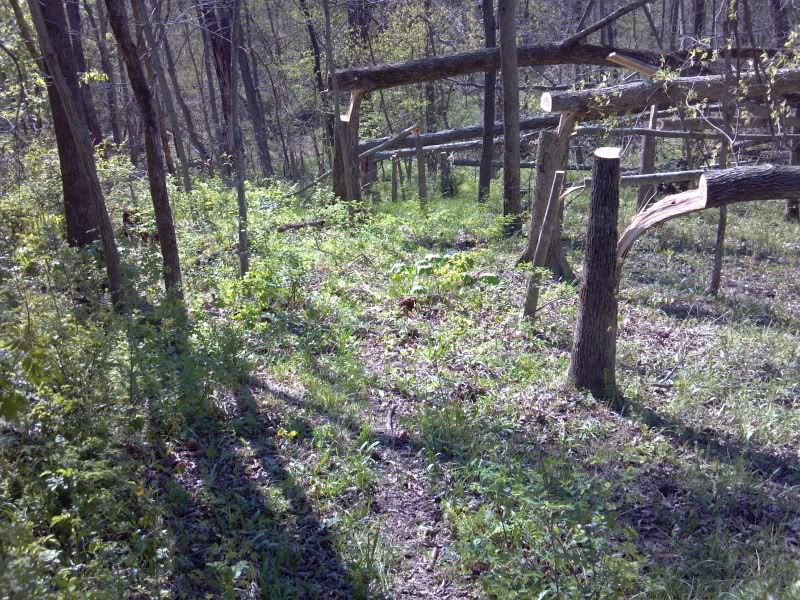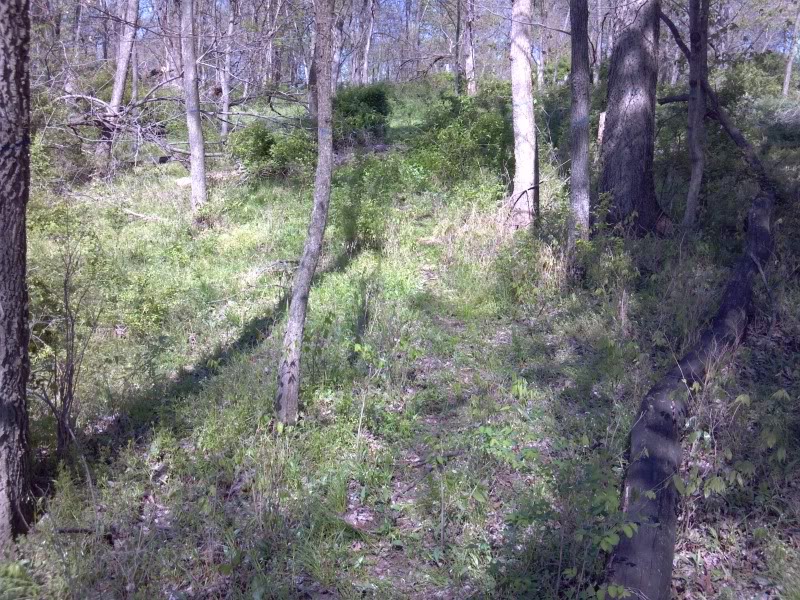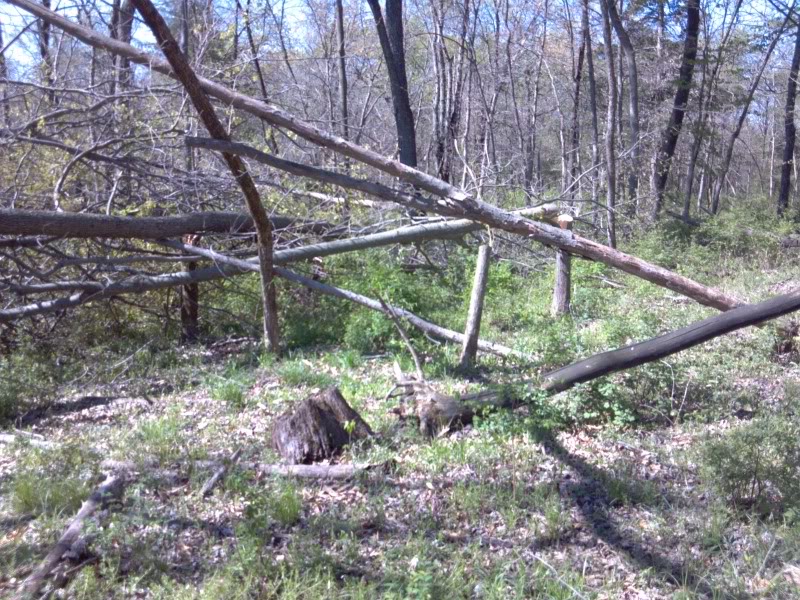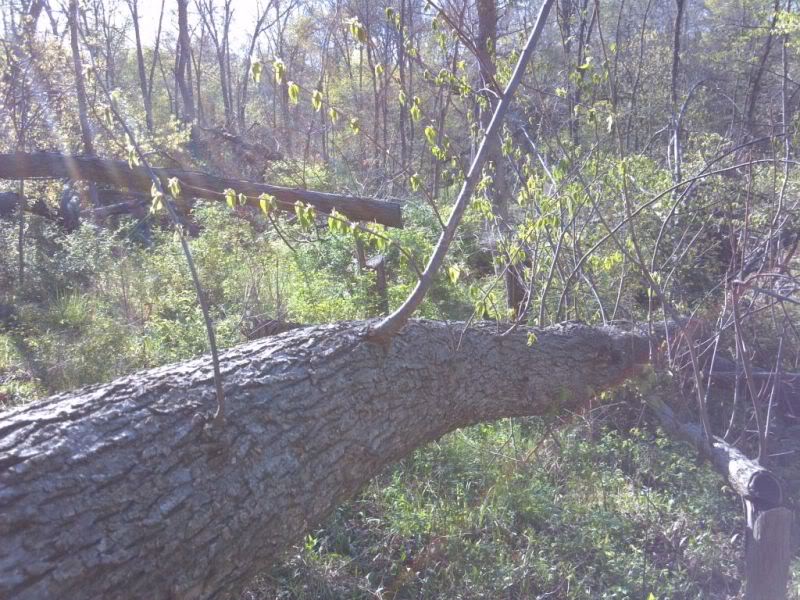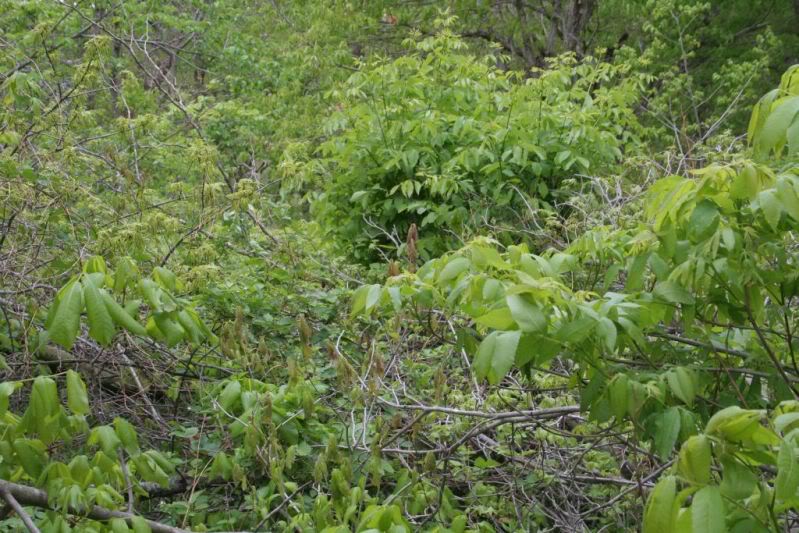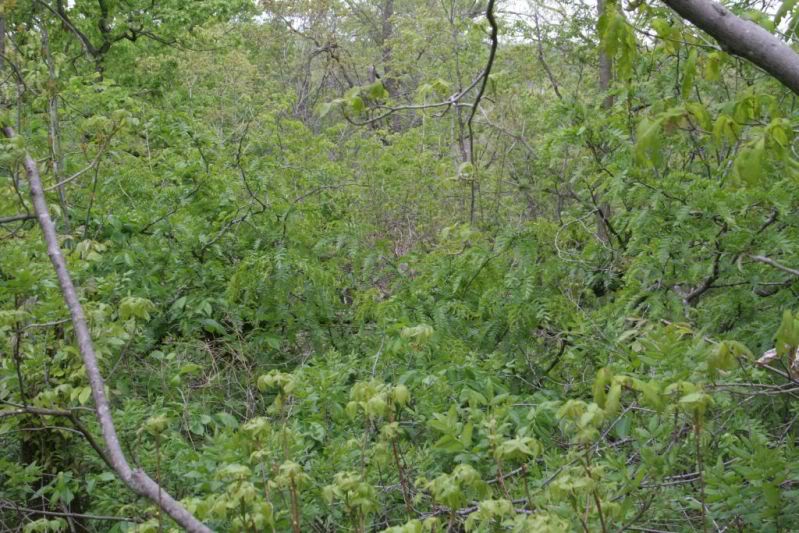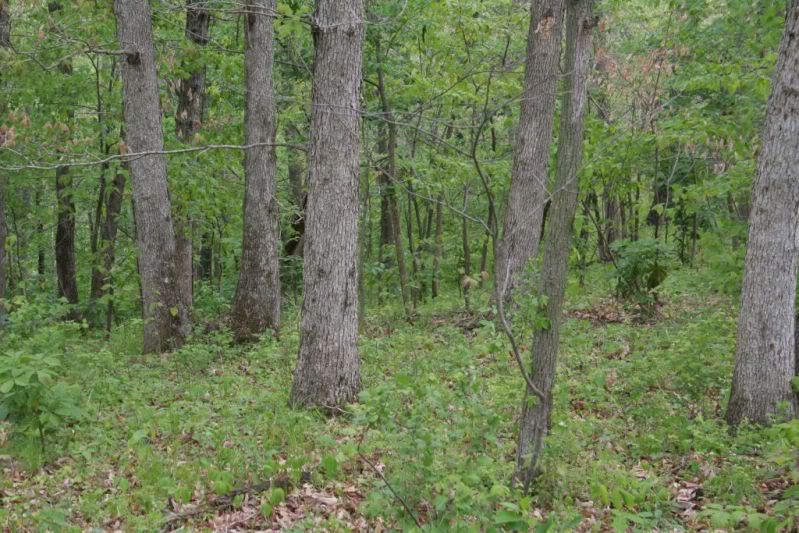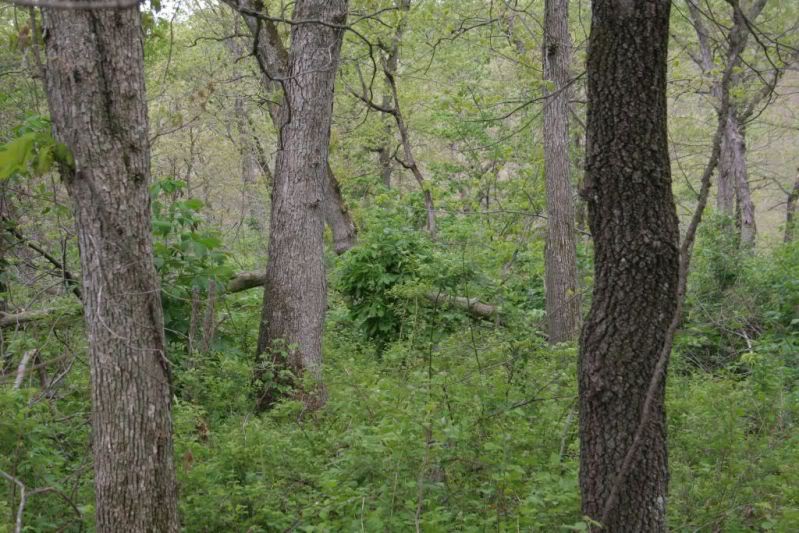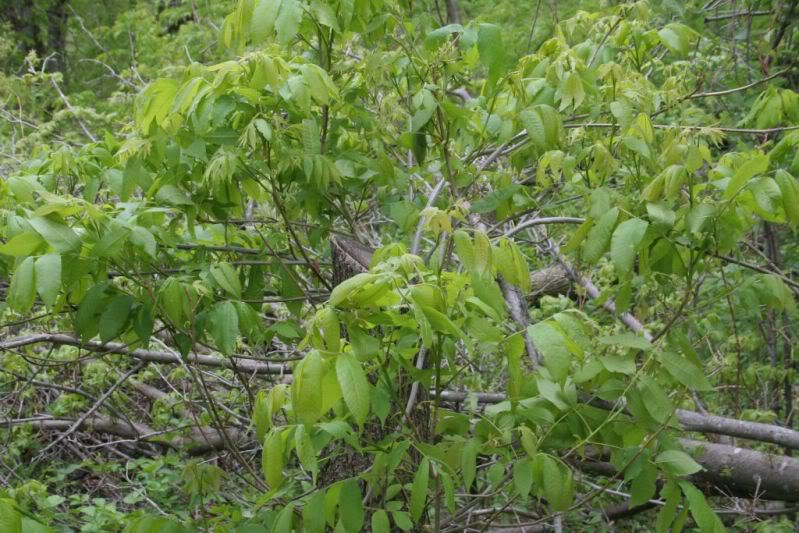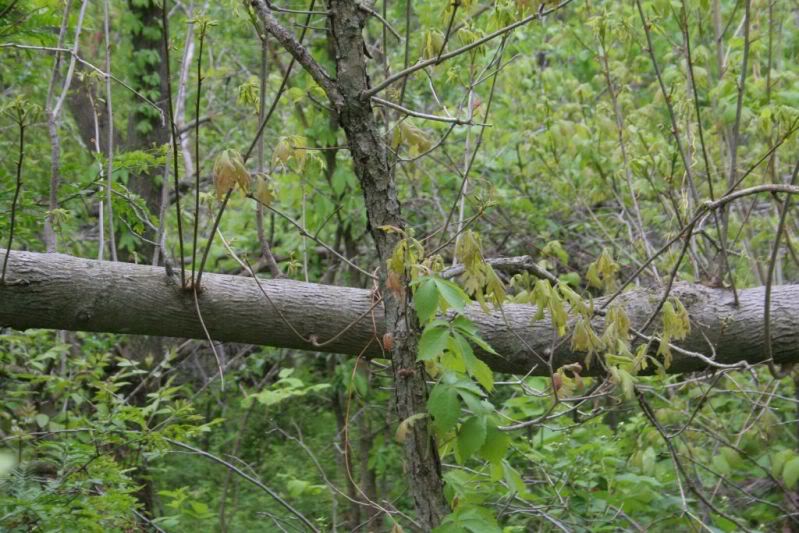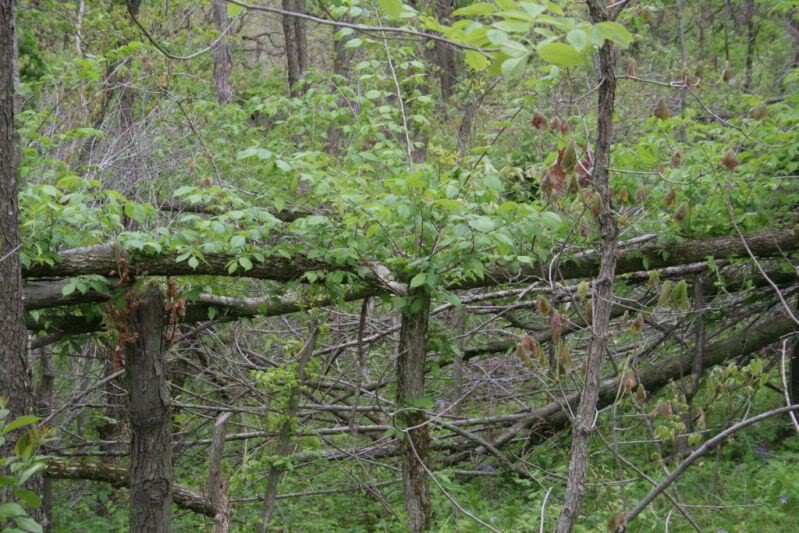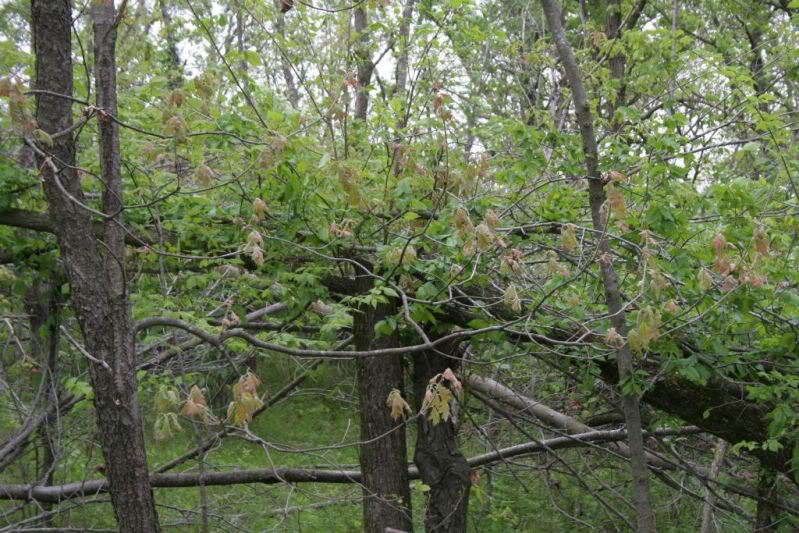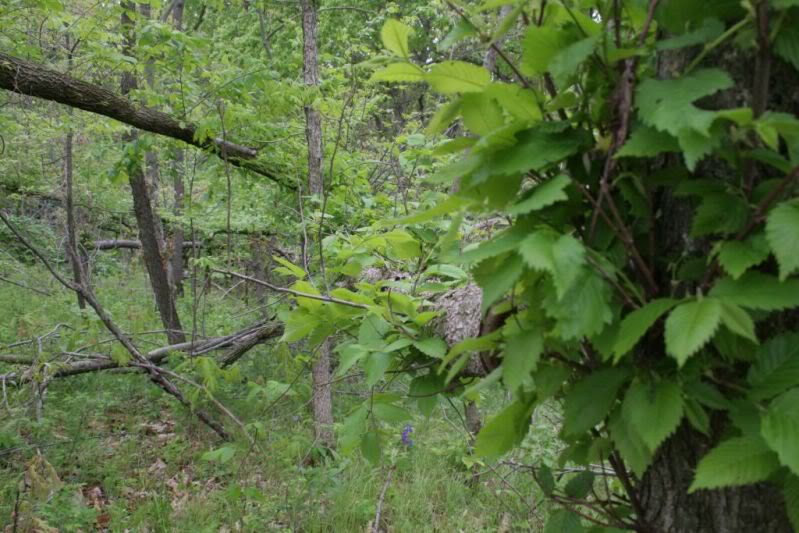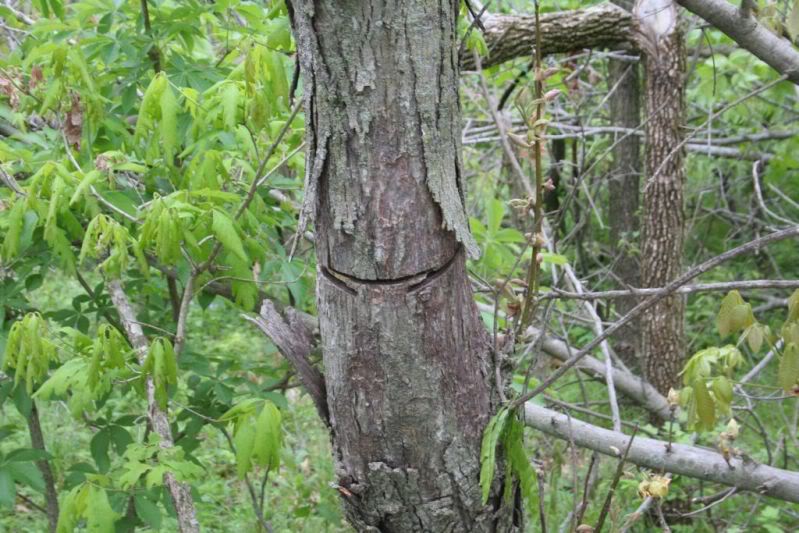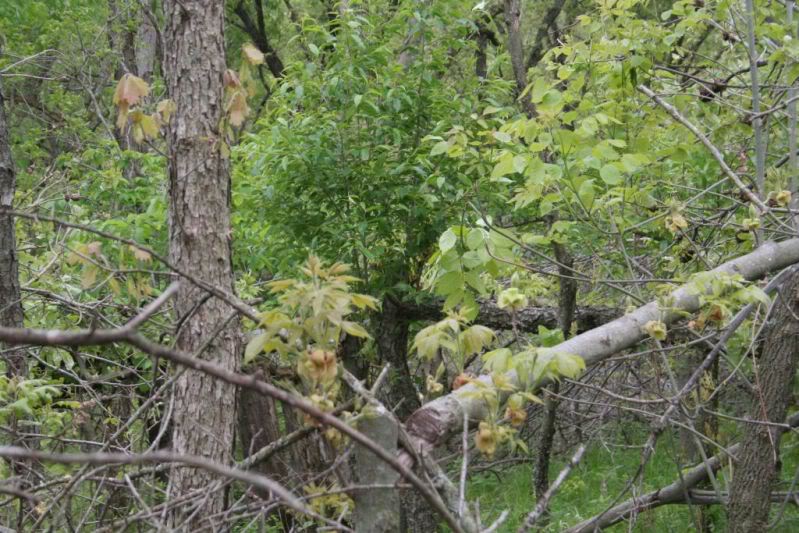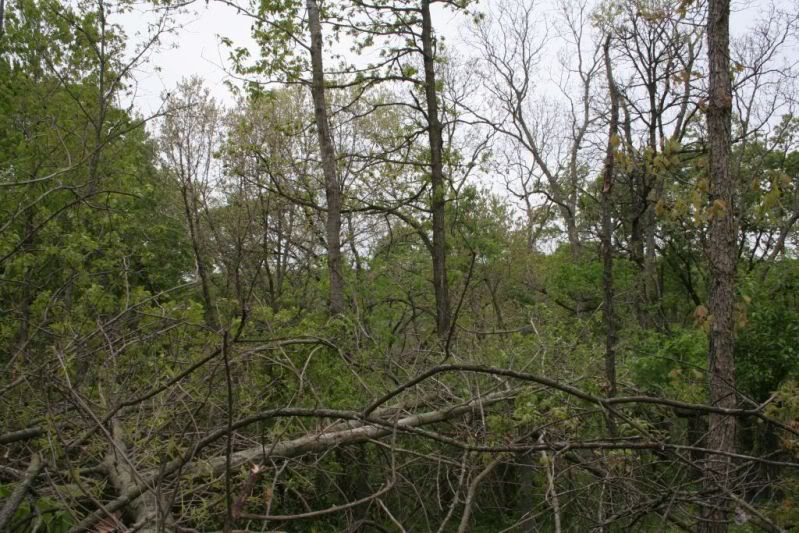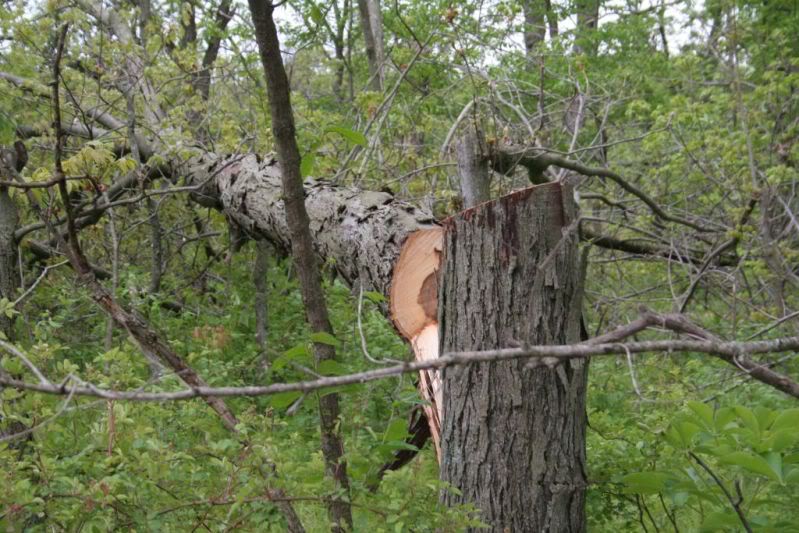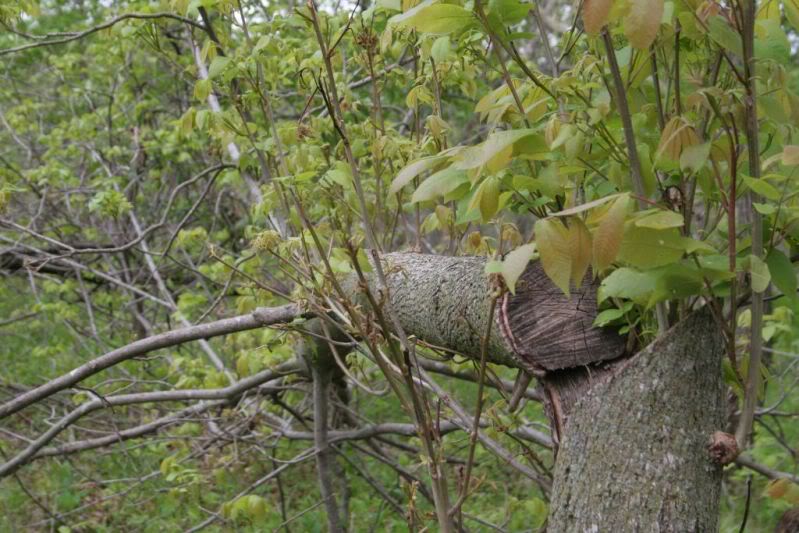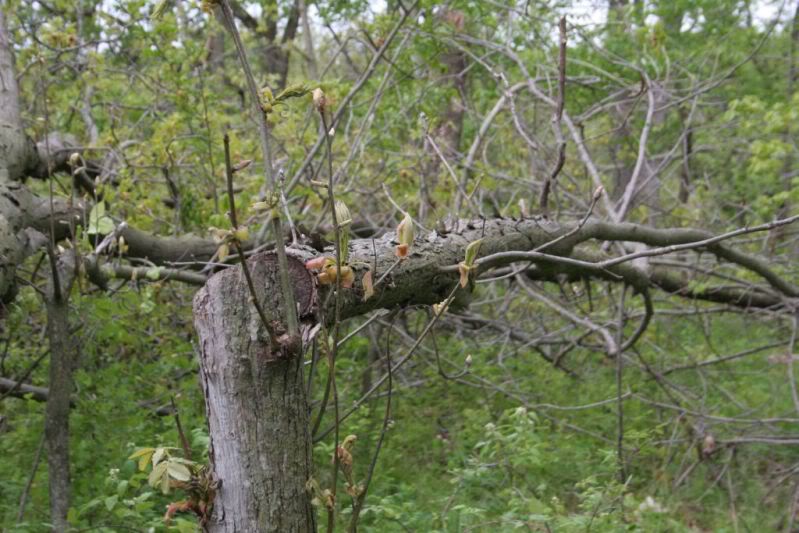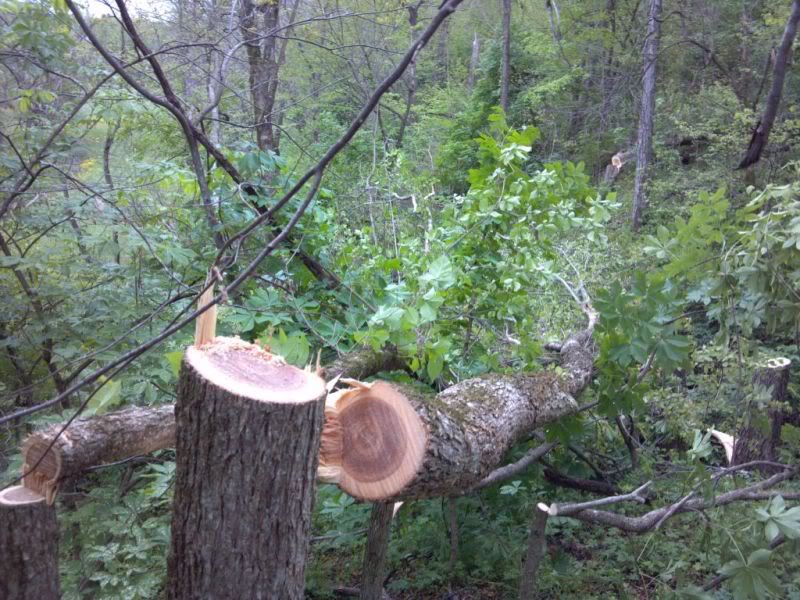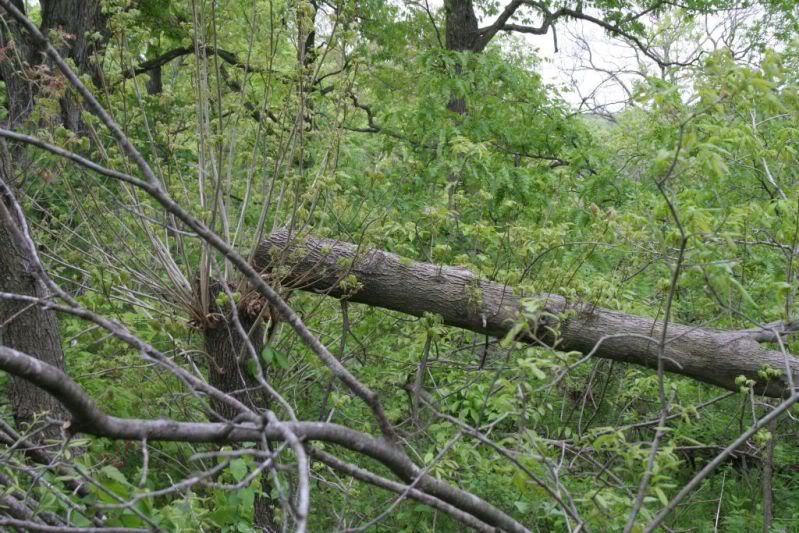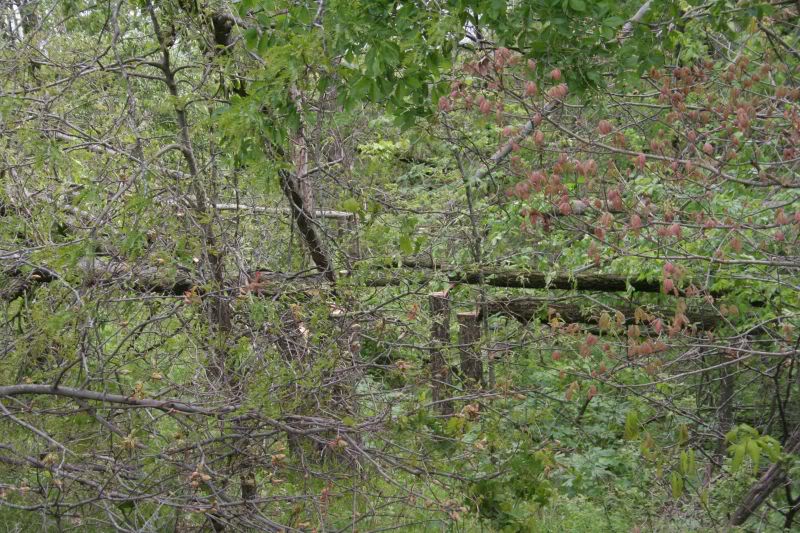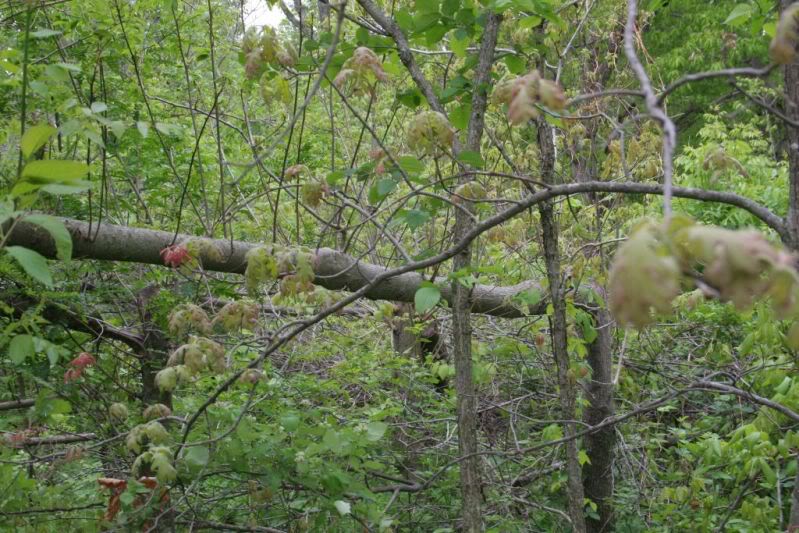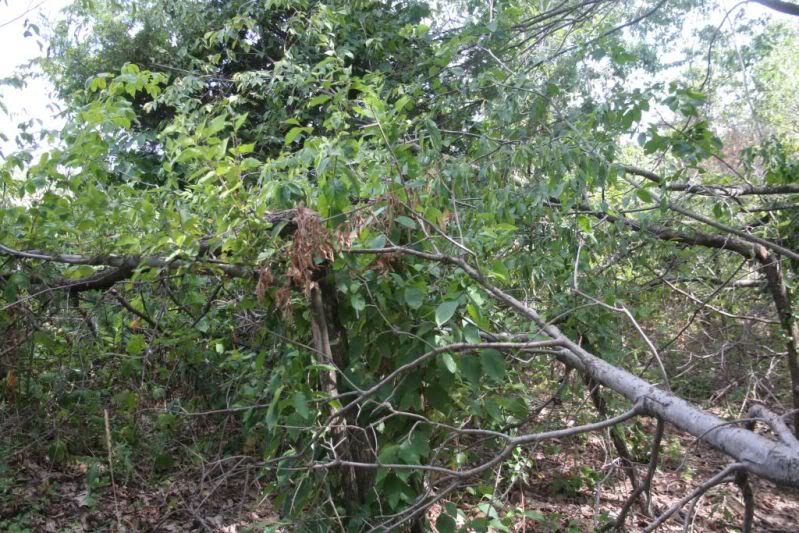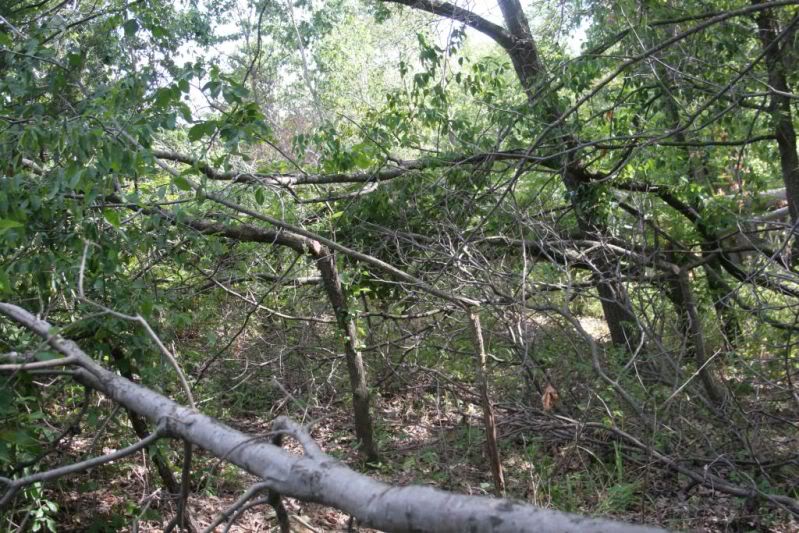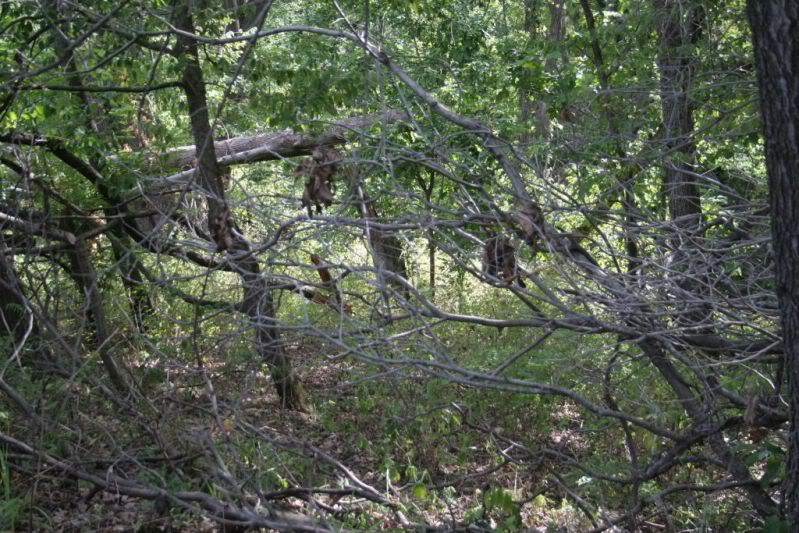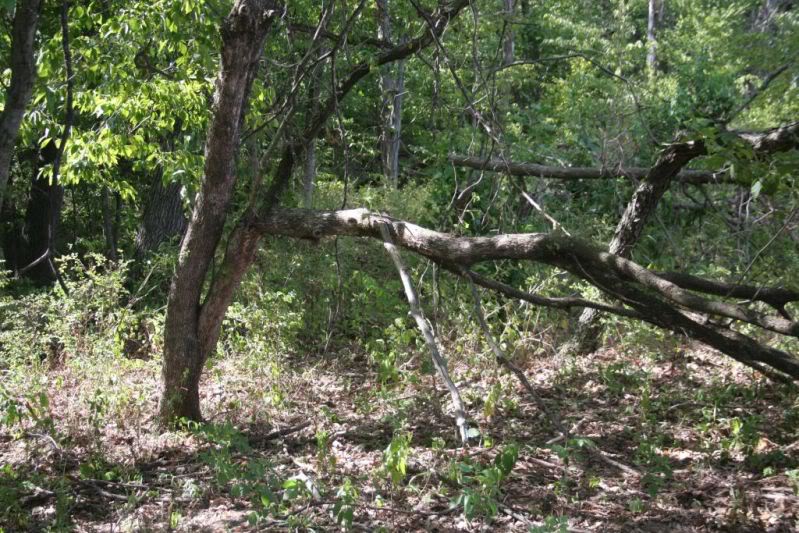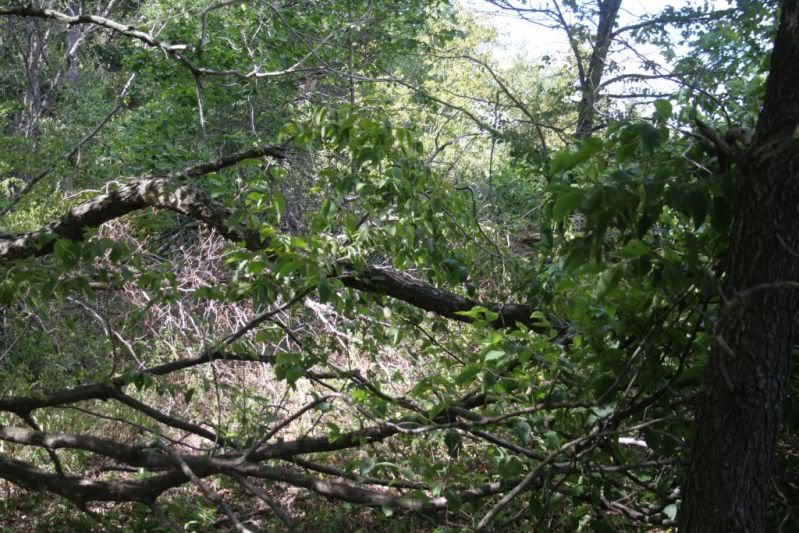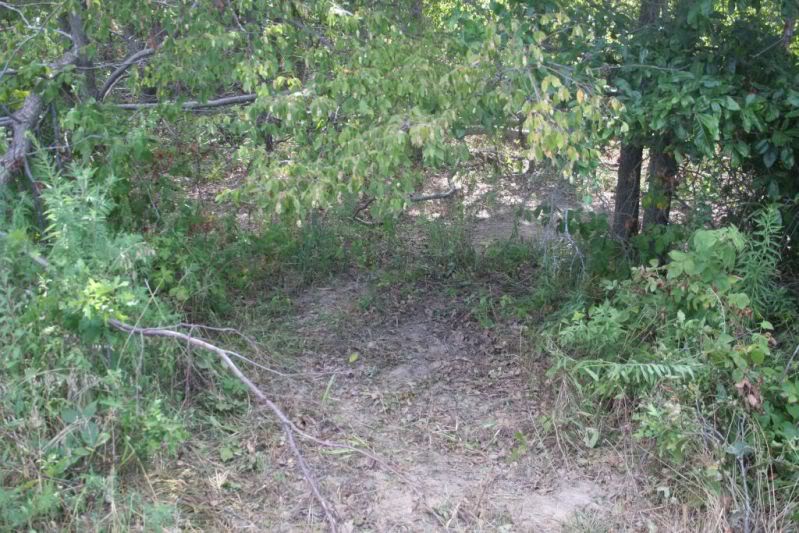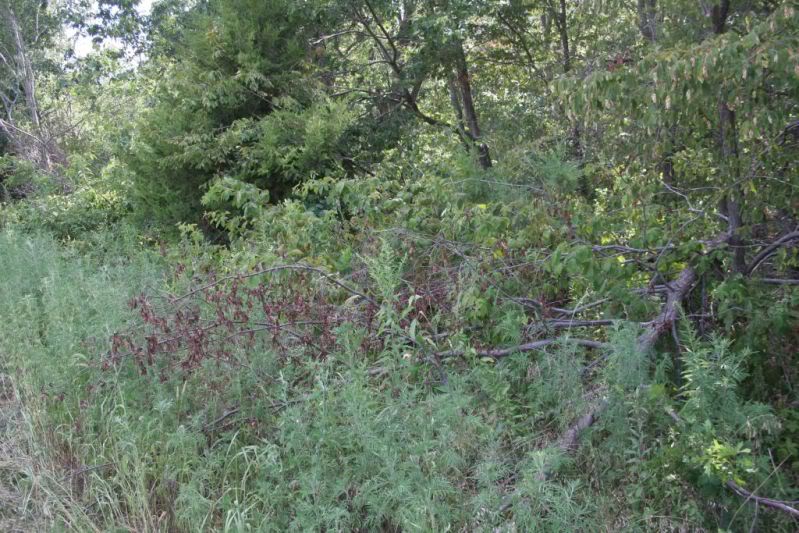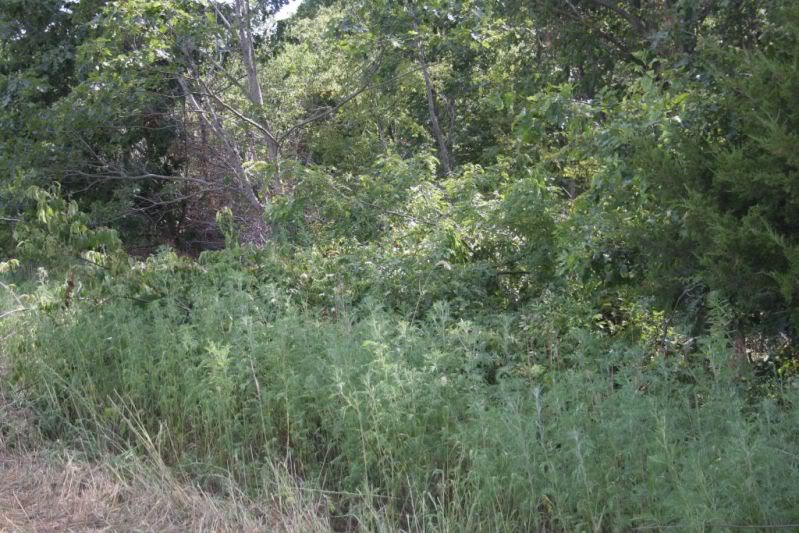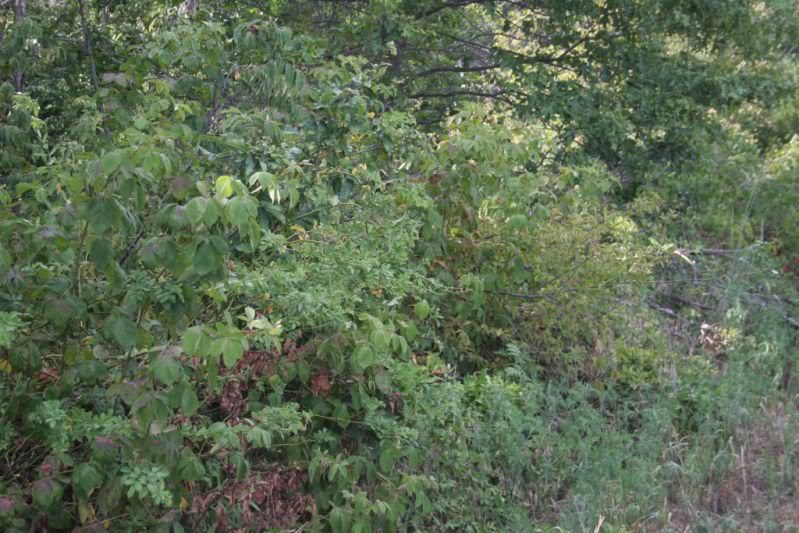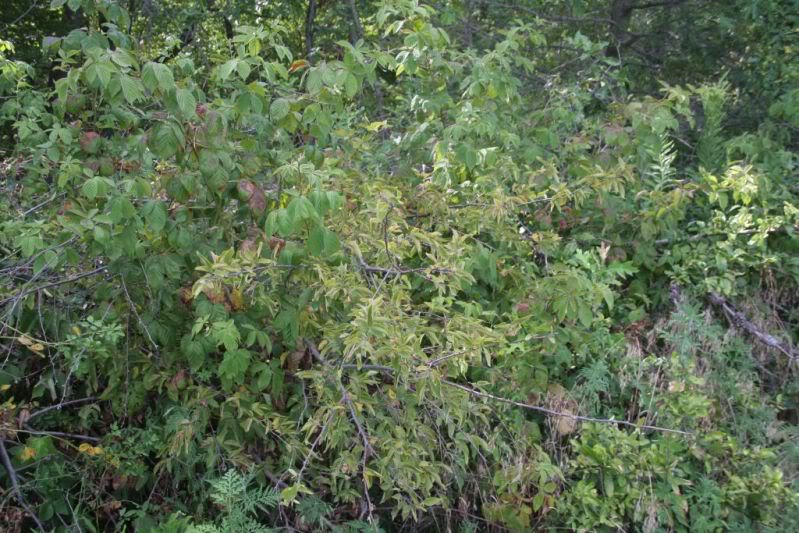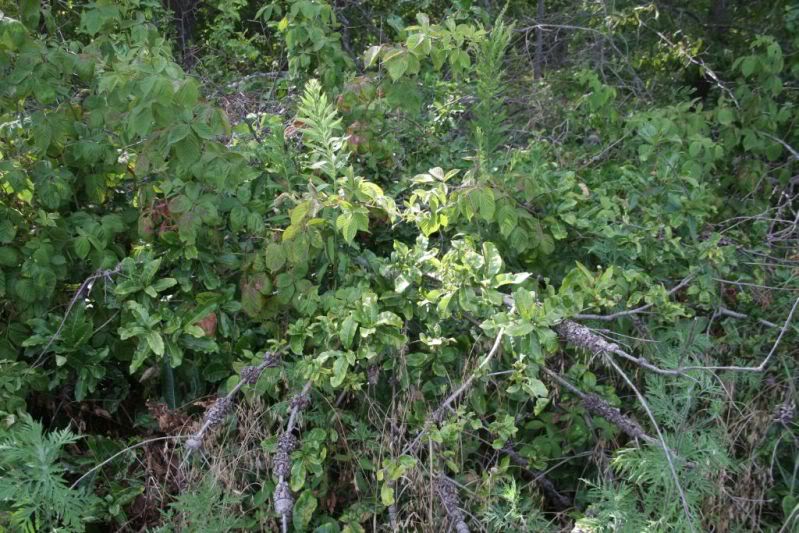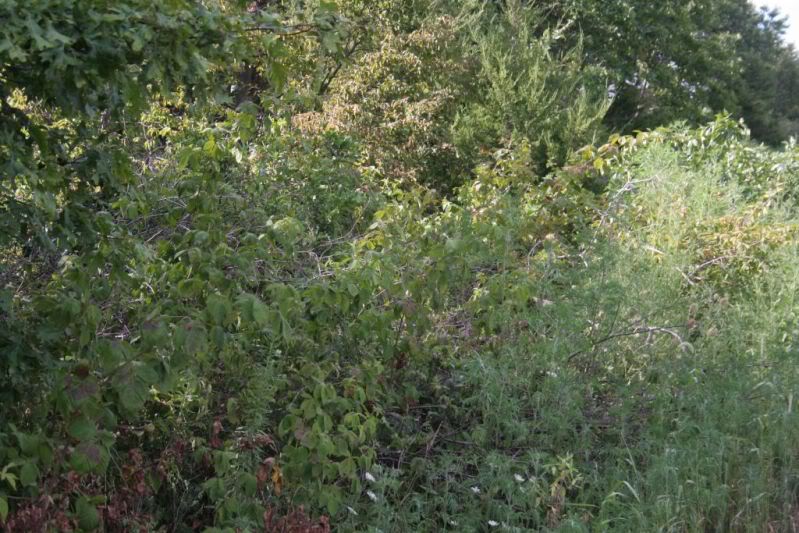Timber Stand Improvement using girdling and hinging
The act of hinging trees to improve whitetail habitat is often referred to as "TSI" but while hinging trees can be a tool in this process it is in and of itself not necessarily "improving" the timber stand unless done properly.
Not all trees can be hinged nor is it safe to even attempt it and falling large trees onto or into valuable crop trees can be counter productive so it is important to know when to girdle trees and when to fall them via hinge cutting them. Once in awhile I run into a stand of primarily "weed trees" but even then using indiscriminate "slash and cut" tactics can lead to mistakes, especially for the novice unfamiliar with tree species.
Marking trees first allows us to carefully look over the trees in our stand and decide which should be crop trees and which will be weed trees. Generally we choose black walnut and white oak over red, black or burr oaks
In some cases the stand may be 80% white oak for instance and then one must look carefully at the canopies and decide which oaks to kill to release the best specimens. In most cases it is far better to make those decisions with a paint can in hand rather then a chainsaw....
If the marked crop tree is surrounded by smaller weed trees then they can be felled by hinge cutting to both create cover and release the crop tree at the same time...such as with this black walnut surrounded by ash, shingle oak and basswood.
Good stands of hardwood timber are usually quite open and poor deer habitat
but large trees crashing into beautiful white or red oaks can cause serious damage that may be irreparable because open wounds are an invitation for oak wilt. Attempting to properly decide which crop trees to leave standing...which a chainsaw in hand is an invitation for disaster...
Marking the trees first allows us to make better choices and actually makes cutting go faster, since all the "thinking" has already been done.
In this stand attempting to fall large trees would not be in the best interest of the timber or the landowner so I use a combination of girdling and falling.
Here is an example of 2 beautiful white oaks (a third is not in the pic) and 2 black walnuts...what to do???
a look at the canopy reveals some damage from winds breaking another tree off and into these tree, the whites are suppressing the black walnuts but the whites are excellent quality...leaving one pondering the right choice??
With a saw running we often may not have the patience to really think things thru and decide what is best and in this case none of these trees are candidates for hinging. I decided to leave all of these trees standing and release them by killing the surrounding weed trees but that is my personal decision and every forester may look at these and make several different choices.
Each of you have unique and different stands of timber....someone with aspen and hemlock for instance will probably find clear cutting areas of their timber over a period of years will be the most effective habitat improvement. Some may feel their timber is more important than whitetail habitat, so there is no one way that is right for all.
Where weed trees (note...not every hickory, elm or ash is a weed tree and depending on the markets can also be valuable depending on the size) are plentiful, you can use them to block areas behind a stand such as I did here for a landowner while doing TSI
Even in otherwise good stands of timber there may be small area where trees can be hinged and not cause harm to crop trees, the ensuing "mess" can make some great whitetail habitat...
Often smaller weed trees can be tipped over without harming large crop trees and provide some ground cover
Falling shade tolerant weed trees such as ironwood, elm and hickory can allow at least a chance for some oak regeneration
Large weed trees however can be safely girdled to open canopy, releasing the adjacent oak crop trees and allowing some understory re-growth to occur
Hinging large trees can be dangerous and "widow makers" such as this hickory can kill you in a heartbeat if you forget....
Falling trees twist, turn, snap backwards....all kinds of crazy and unexpected things so always have an escape route and if trees hang up...leave the area until high winds either bring the tree on down or it is there to stay.
Even girdling is not without danger and is often more dangerous then falling a tree because if it is rotten inside it will snap off in a flash and that can be deadly if you are on the "leaning" side when it does!!
Oak wilt is very common in black oaks here so i have learned to girdle with caution!
In this pic there are a number of black oaks...all girdled...all of which came down sometimes before even finishing the first girdle.
We are all in a hurry to create some fantastic whitetail habitat but do some planning and research first, learn what species of trees are in your stand and how to identify the best of the crop trees if any are present. Some may not have the time nor experience for this and may choose to have a contractor do the work or at least mark the trees for you. Others will be eager to learn and do the work themselves and if so I urge you to read thru the thread on Timber Stand Improvement before you begin.
Good quality hardwood timber can be very valuable, not only does it add to the value of your property but good healthy, fully released oak trees can provide plentiful, sweet mast that whitetails find irresistible. Creating some pockets of think ground cover using hinging to fall competing weed trees will insure they bed there rather then just make nightly forays into your timber from the neighbors place.



